Fuel in FOCUS
BINGO Industries is opening the gateway to the alternative fuel market.
FEATURES
Australia’s first incinerator bottom ash plant ready to run

Setting new standards for e-waste ESG
Taking waste equipment to the next level Meet the ‘landfill whisperer’
PROUDLY SUPPORTED BY:

PMS 380 PMS 376 PMS 355 MARCH 2023





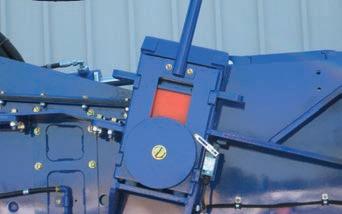





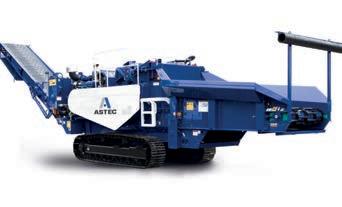




19 FIRE IN THE BELLY
FUEL IN FOCUS
BINGO Industries is opening the gateway to the alternative fuel market with new green technology that will push its material recovery rate towards 90 per cent.
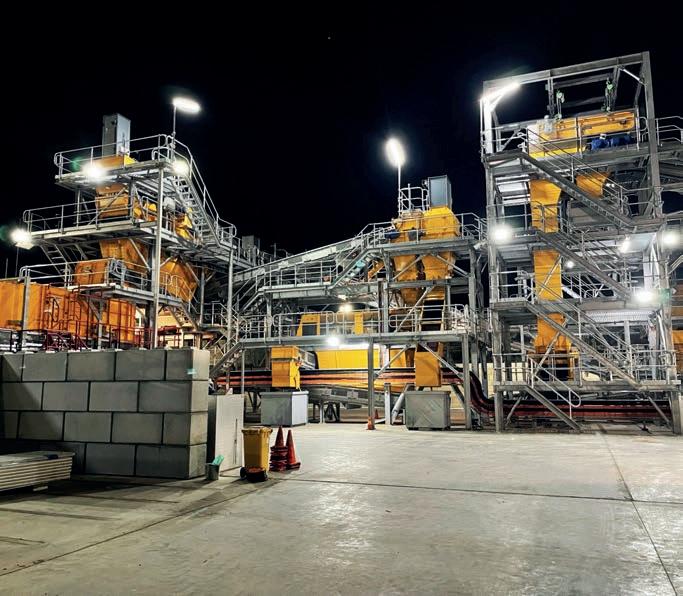
“BY SOLVING OUR RESIDUAL WASTE STREAM, WE CAN PRODUCE SIGNIFICANT ECONOMIC, ENVIRONMENTAL AND CARBON BENEFITS.”
In this issue
Features
Resource Recovery at forefront for REMONDIS.
46 THE NEXT LEVEL
Tutt Bryant goes to the next level with the acquisition of 600 Cranes.
48 THE GOOD FIGHT
The changing face of Isuzu’s packaging push.
50 $280M DEAL
Veolia signs long-term contract with the City of Gold Coast.
52 INVESTING IN QUALITY
Why the latest WEIMA Powerline shredder is worth the investmen

54 ORGANIC PARTNERSHIP CEA and Thoeni lay the groundwork for better value solutions in organics recycling.
56 OLD INDUSTRY, NEW TRICKS
An ASTEC high-frequency screen helps build a circular economy.
58 THE FUTURE OF WASTE
Waste Expo Australia 2023 to tackle the future of waste and recycling.
61
Australasian Waste and Recycling Expo expands its program.
64 WORKING TOGETHER Waste 2023 builds industry connections.
Regulars
67 PRODUCT SPOTLIGHT
69 LAST WORD
14 FUEL IN FOCUS BINGO industries pushes to tackle the last 20 per cent of waste to landfill. 19 FIRE IN THE BELLY Blue Phoenix’s world-first Incinerator Bottom Ash facility is complete. 23 POWERFUL SOLUTIONS Eneraque offers powerful solutions for waste gas. 26 NEW RESEARCH Monash University brings the science to waste processing. 28 MASTERING ORGANICS Mastershred tackles organic waste and carbon emissions. 31 LEADING THE FIELD LGI’s Scott Prior is the ‘landfill whisperer’. 34 BETTER INFORMATION Green Technology Recycling harnesses the power of data science. 36 A SHRED OF HOPE Shred-X has e-waste solutions built for sustainability.
TECH IN SCIPHER
39 MORE
TECHNOLOGIES
PUSHING
Setting new standards for ESG reporting. 43
THE BOUNDARIES
IN THE ZONE
COVER
14
STORY
- Simon Sherwood, BINGO Industries General Manager of Operational Development
4 / WMR / March 2023
After three years of development work, Blue Phoenix’s first Australian Incinerator Bottom Ash processing facility is ready to flick the switch.

GENOX’S NEW SHREDDER IS A PLASTIC PIPE’S WORST NIGHTMARE. THAT’S APPLIED THINKING. Call: Email: Visit: 03 9706 8066 sales@appliedmachinery.com.au appliedmachinery.com.au genoxmachinery.com.au Genox’s new J-Series pipe shredder is specificially designed for HDPE plastic pipes. With a unique multi-rotor design and long life counter knives, it quickly shreds different diameter and sized pipes. Like all Genox equipment it comes with the support and back up that only a true local machinery partner can provide.

























































Warranty is subject to the conditions outlined in the IAL New Vehicle Warranty. For further information please visit isuzu.com.au or contact your local dealer. FSA/ISZS1339 Keep your business moving. We know how important it is to keep your business on the road. That’s why we’re o ering a 6 year factory warranty and 6 years of 24/7 roadside assist on Isuzu trucks.






































































From the Editor
Renewed energy
Energy-from-waste (EfW) has been a successful and critical component of the waste hierarchy for many years overseas.

While Australia may have been slow to adopt the technology, a pipeline of projects is changing the nation’s waste landscape.
Many industry insiders hope that Australia’s first EfW facility, currently being built in Kwinana, Western Australia, will quell the naysayers and highlight the benefits it can bring as the nation transitions to a circular economy.
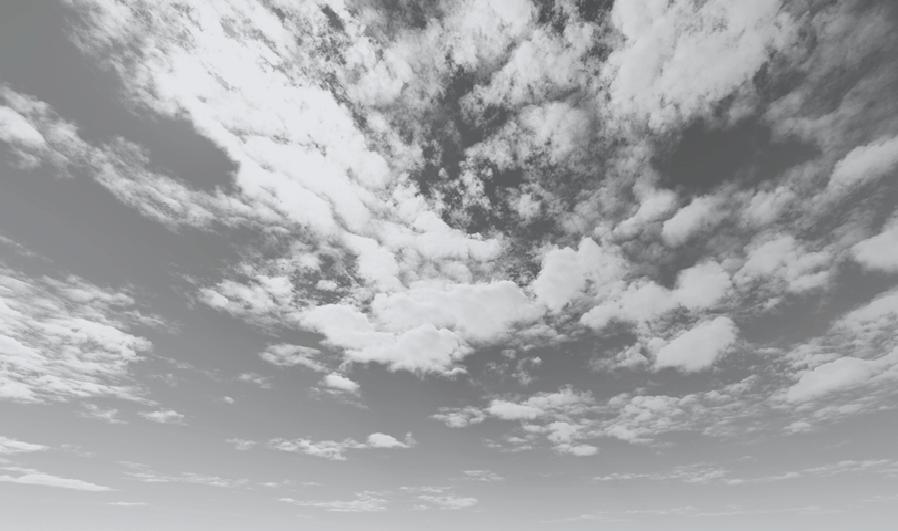
The chance to be involved in the landmark project was enough to entice Ian Lynass out of semi-retirement. An industry veteran and now Blue Phoenix Australia, Managing Director, Ian has taken a leading role in constructing Australia’s first incinerator bottom ash (IBA) processing facility.
He says it’s a timely and responsible approach for the technology now to be included in Australian waste strategies for the long-term (Page 19).
As this edition of Waste Management Review highlights, the value of residual waste as fuel is being unlocked across multiple platforms as the world transitions away from traditional energy sources.
In this month’s cover story, (Page 14) Simon Sherwood, BINGO Industries General Manager of Operational Development, explains how a new division is opening the gateway to the alternative fuel market and helping the company conquer the last mile –finding a solution to divert the last 20 per cent of its waste from landfill.
In 2022, Queensland-based Eneraque propelled Australia’s gas-to-energy sector to the next level – upgrading biogas to biomethane that will power heating, hot water and cooking for thousands of Sydneysiders (Page 23).
Meanwhile Mastershred, is hoping a new easily deployable plant will provide greater opportunities for an EfW solution for organic waste (Page 28).
While technology is advancing, these projects wouldn’t be successful without the people driving them. We talk with Scott Prior, LGI’s “landfill whisperer”, whose knowledge of landfill management is helping regional councils capture biogas to abate carbon emissions, improve local air quality and, in some cases, generate renewable energy. (Page 31).
While it still might be some time before everyone embraces EfW, it appears Australia is on the cusp of some exciting changes.
CHIEF OPERATING OFFICER
Christine Clancy christine.clancy@primecreative.com.au
GROUP MANAGING EDITOR
Sarah Baker sarah.baker@primecreative.com.au
MANAGING EDITOR
Mike Wheeler mike.wheeler@primecreative.com.au
EDITOR
Lisa Korycki lisa.korycki@primecreative.com.au
JOURNALIST
Leon Cranswick leon.cranswick@primecreative.com.au
DESIGN PRODUCTION MANAGER
Michelle Weston michelle.weston@primecreative.com.au
ART DIRECTOR
Blake Storey blake.storey@primecreative.com.au
DESIGN
Louis Romero, Kerry Pert
BRAND MANAGER
Chelsea Daniel-Young chelsea.daniel@primecreative.com.au
p: +61 425 699 878
CLIENT SUCCESS MANAGER

Justine Nardone justine.nardone@primecreative.com.au
HEAD OFFICE
Prime Creative Pty Ltd 379 Docklands Drive Docklands VIC 3008 Australia p: +61 3 9690 8766 f: +61 3 9682 0044 enquiries@primecreative.com.au www.wastemanagementreview.com.au
SUBSCRIPTIONS
+61 3 9690 8766 subscriptions@primecreative.com.au
Waste Management Review is available by subscription from the publisher. The rights of refusal are reserved by the publisher
ARTICLES
All articles submitted for publication become the property of the publisher. The Editor reserves the right to adjust any article to conform with the magazine format.
COPYRIGHT

Waste Management Review is owned by Prime Creative Media and published by John Murphy.
All material in Waste Management Review is copyright and no part may be reproduced or copied in any form or by any means (graphic, electronic or mechanical including information and retrieval systems) without written permission of the publisher. The Editor welcomes contributions but reserves the right to accept or reject any material. While every effort has been made to ensure the accuracy of information, Prime Creative Media will not accept responsibility for errors or omissions or for any consequences arising from reliance on information published. The opinions expressed in Waste Management Review are not necessarily the opinions of, or endorsed by the publisher unless otherwise stated.
Lisa Korycki
8 / WMR / March 2023
The missing piece for Australia’s
E-WASTE CRISIS
The missing piece for Australia’s
E-WASTE CRISIS
Did you know that approximately 54% of all e-waste in Australia is collected, with around 80% of this going to low efficiency recycling?
Did you know that approximately 54% of all e-waste in Australia is collected, with around 80% of this going to low efficiency recycling?
ReSource has invested in the solutions needed to process e-waste safely, efficiently and in an environmentally friendly manner
ReSource has invested in the solutions needed to process e-waste safely, efficiently and in an environmentally friendly manner
Scale & LocationEfficiencyFire & SafetyEnvironmentTechnology
Australia's first large scale e-waste recycling facility covering 15,000m2.
Australia's first large scale e-waste recycling facility covering 15,000m2.
Strategically located only 15mins to the port and within 60km of three quarters of Victorian residents
Strategically located only 15mins to the port and within 60km of three quarters of Victorian residents
E-waste specific processing equipment to maximise efficiency and recovery rates leading to better environm
lental outcomes
E-waste specific processing equipment to maximise efficiency and recovery rates leading to better environm


lental outcomes
Implement industry leading fire prevention/ protection and safety controls using over a dozen thermal cameras and multiple thermally activated Al powered water cannons
Implement industry leading fire prevention/ protection and safety controls using over a dozen thermal cameras and multiple thermally activated Al powered water cannons
Advanced dustand emissions collection system able to capture VOC's and airborne heavy metals and site fully powered by solar
Scale & LocationEfficiencyFire & SafetyEnvironmentTechnology

Advanced dustand emissions collection system able to capture VOC's and airborne heavy metals and site fully powered by solar
Australian first Al-powered x-ray battery sorter and battery to fertiliser processing capabilities
Australian first Al-powered x-ray battery sorter and battery to fertiliser processing capabilities
info@re-source.net.au www.re-source.net.au
www.re-source.net.au
info@re-source.net.au

EXTRACTING MAXIMUM VALUE FROM WASTE


HIGHLY ROBUST DESIGN


QUICK & EASY SET UP
LOW CAPITAL OUTLAY

Obtaining the quickest return on your capital investment depends on how quickly operators can be up and running, and the volume of commodities that an operator can recover from their waste stream. EDGE Innovate’s range of mobile solutions are tried and tested, are quick and easy to set up, require no on-site civil works, represent a low capital outlay and are proven to achieve high commodity recovery levels.

TO FIND OUT MORE CALL OR EMAIL
+61 24 365 4 24/7
info@focusenviro.com.au
focusenviro.com.au
HIGHLY CUSTOMIZABLE

Consultation begins on WA e-waste to landfill ban
Western Australians can now have their say on the rollout of an e-waste to landfill ban from 2024.
The ban would include televisions, mobile phones, computers, screens, data storage, white goods, batteries, medical devices, lighting and lamps.
Future phases of the ban would capture small household appliances such as kettles, toasters and vacuums, photovoltaics including solar panels, as well as monitoring and control equipment.
The ban is a state government election commitment and would complement existing national product stewardship schemes, support the local e-waste industry and focus on recovering high value materials such as metals.
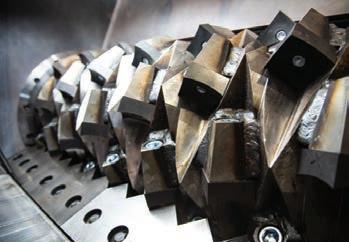
Funding of $14 million will support the implementation of the ban. More than $10 million will go towards infrastructure grants to boost the state’s collection, storage, processing and recycling network capacity.

Environment Minister Reece Whitby said e-waste is a rapidly growing stream of waste containing valuable and rare materials that are critical to reduce, reuse and recycle.
“Reducing waste to landfill not only moves WA closer to its goal of a circular economy, but provides jobs, builds local industry and protects the environment.

“Having your say will help us understand any industry or community concerns to help shape the e-waste ban to ensure it is practical, workable and effective.”

The public consultation period for the e-waste to landfill ban is open until 31 March, 2023.

News OFFICIAL AUSTRALIAN DISTRIBUTOR Robust & Reliable Shredding Machinery for any application Carrum Downs, VIC 3201 +61(0)3 8400 6066 cemactech.com More than 1,200 machines delivered annually worldwide 40k+ machines sold
NSW soft plastics crisis hits council recycling facility
Hornsby Shire Council has introduced proof of residence and quantity limits for people using the Community Recycling Centre (CRC) as it struggles to cope with increased demand of its soft plastics recycling services following the suspension of REDcycle.
The council’s Mayor, Philip Ruddock has called on both the state and federal governments to do more to urgently address the soft plastics crisis.
Hornsby council’s CRC has a viable soft plastics recycling service, however the amount of soft plastics dropped off has more than doubled since REDcycle suspended its service from supermarkets in November 2022. Based on the increasing trend, the council estimates the CRC facility will accept about 50-80 tonnes of soft plastic material over the next 12 months.
The council has a partnership with Plasmar, a plastics recycling specialist, which sorts soft plastics, pelletises them and then makes a range of products including posts, boards, sleepers, bollards and other construction materials. It said Plasmar’s Sydney factory has a limited capacity to accept soft plastics generated by the community and, with the increasing demand on its services, has capped the quantities accepted.
“Restricting our reception of soft and hard plastics and
Styrofoam to residents of Hornsby Shire is the first lever we have to pull in an effort to ensure that our recycling processes are not overwhelmed,” said Hornsby Shire Council’s Manager, Waste Management.
Council’s Mayor, Philip Ruddock said it was critical that further funds are invested in recycling services that allow the sorting, processing and remanufacturing of soft plastics into beneficial products that can be used in a circular economy.
“It is time that government looks to regulate the packaging industry and to heavily invest in the necessary remanufacturing facilities that can turn our waste into useful resources”.
Ruddock said that following on from the Global Recycling Crisis caused when China and other countries ceased accepting plastics from western countries, it was critical that onshore recycling
and remanufacturing capacity was developed to ensure Australia’s waste does not need to be exported again.
“If our recycling systems are going to meet community demand, state and federal governments must invest in the rapid expansion of soft and hard plastics sorting and remanufacturing facilities such as Plasmar.”
Residents need to show they reside in the Local Government Area in order to recycle soft plastics, hard plastics and Styrofoam. Quantity limits for residents of one normal shopping bag full of soft plastics (40cmx40cm bag) per week have also been introduced.
The new rules came into effect as of 8.30am on Friday, 27 January 2023. CRC facility staff will accept either a Hornsby Shire Council issued rates notice or driver’s license proving residence in Hornsby Shire.
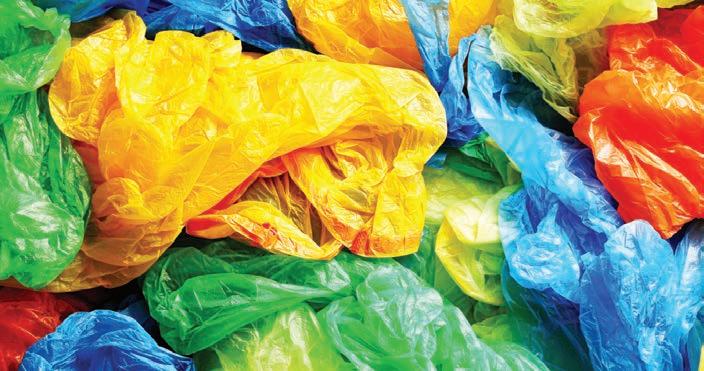
12 / WMR / March 2023 News
The amount of soft plastics taken to Hornsby Shire Council’s recycling centre has more than doubled since the REDcycle program was suspended.
60-80%
Potential to reduce a Council's carbon footprint by
Did you know that your landfill can actually help reduce local greenhouse gas emissions? If not captured, biogas from landfills can account for 60-80% of a local council’s carbon footprint.
Even small (open or closed) landfills can produce enough gas to support financially viable biogas extraction. Some sites will produce enough gas to create dispatchable, renewable energy for decades.
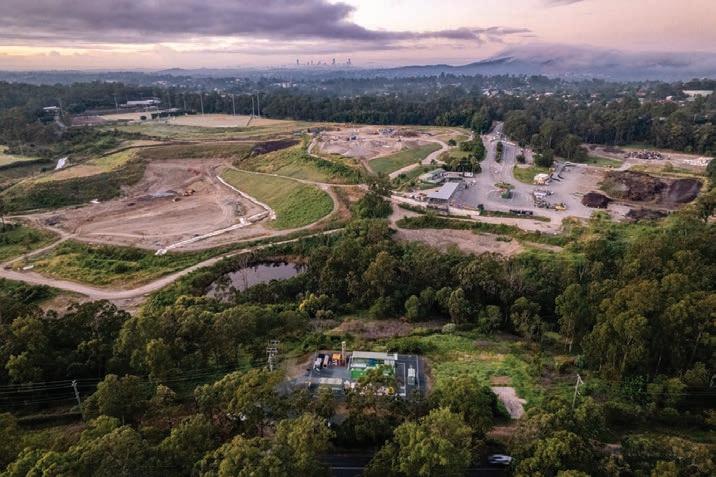
LGI’s biogas extraction systems capture and combust the methane-rich biogas converting it into less harmful carbon dioxide. Every tonne of CO2 equivalent that an LGI system prevents your landfill from emitting, could earn Australian Carbon Credit Units.

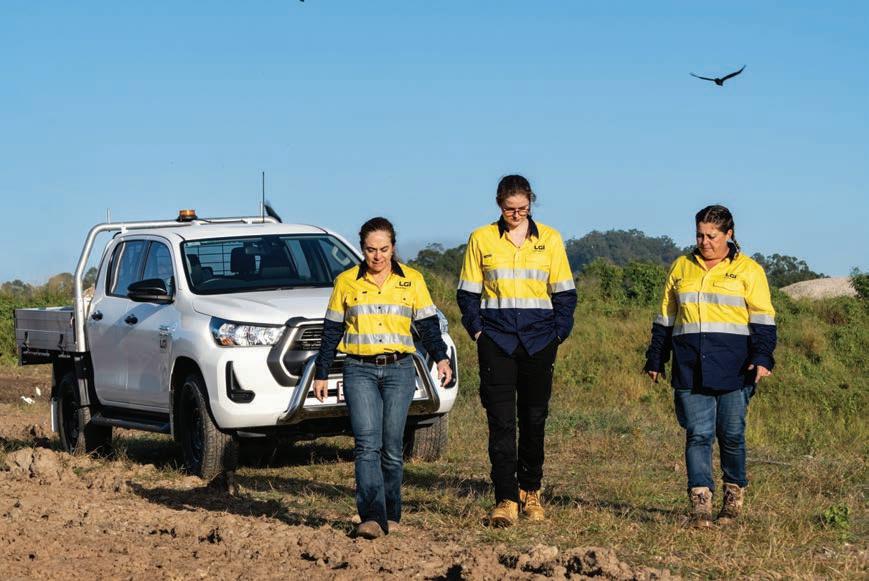
Don’t underestimate the value of your landfill. Biogas extraction from landfill is proven technology and is available now to drastically reduce your carbon emissions.
Fulfil community expectations
Meet decarbonisation targets
Pathway to renewable energy
LGI provides best practice biogas systems, often at no cost to Councils! Contact us today to discuss carbon abatement opportunities for your landfill.
www.lgi.com.au 07 3711 2225
Fuel in FOCUS
BINGO INDUSTRIES IS OPENING THE GATEWAY TO THE ALTERNATIVE FUEL MARKET WITH NEW GREEN TECHNOLOGY THAT WILL PUSH ITS MATERIAL RECOVERY RATE TOWARDS 90 PER CENT.
Waste will play a critical role in supporting the clean energy transition, says Simon Sherwood, BINGO Industries General Manager of Operational Development.
As the world transitions away from traditional energy sources, Simon says the value of residual waste as fuel is being identified and unlocked.
And as heavy industries move to reduce their emissions profile because of sustainability concerns, resource preservation and increased costs –waste is at the forefront as an alternate green fuel source with a circular economy benefit.
In collaboration with FOCUS Enviro, BINGO has taken delivery of an
UNTHA XR3000C shredding system to develop new alternative fuel products from waste.

Simon describes it as conquering the last mile – finding a solution to divert a substantial component of the company’s last 20 per cent of waste from landfill.
“We have a vision for a waste-free Australia and are passionate about leading the change,” he says.
“We are actively driving for a circular economy by further increasing our recovery rates as well as the quality of recovered products.
“By increasing diversion of our residual waste stream from landfill, we can produce significant
economic, environmental and carbon benefits.”
Simon has 17 years’ experience within the waste industry and has expertise in optimising recovery from a broad variety of waste streams.
He moved straight into a leadership role at a young age, supervising a familyowned steel recycling yard and small waste transfer station in the UK.
As the business expanded, he operationalised a new organics processing facility that is now a successful anaerobic digestion enterprise.
Simon arrived in Australia in 2011 for a working holiday and was quickly sponsored by a waste management company. Working his way into a site
COVER STORY 14 / WMR / March 2023
The UNTHA XR3000C shredding system will allow BINGO Industries to develop new alternative fuel products.
operation managers role he oversaw operations of BINGO’s Eastern Creek Recycling Ecology Park, which can accept up to two million tonnes of waste per year.
As part of a BINGO acquisition of Dial-A-Dump Industries in 2019, he moved into the General Manager Resource Recovery role, overseeing all 10 New South Wales sites – a mixture of transfer stations, resource recovery facilities and landfills.
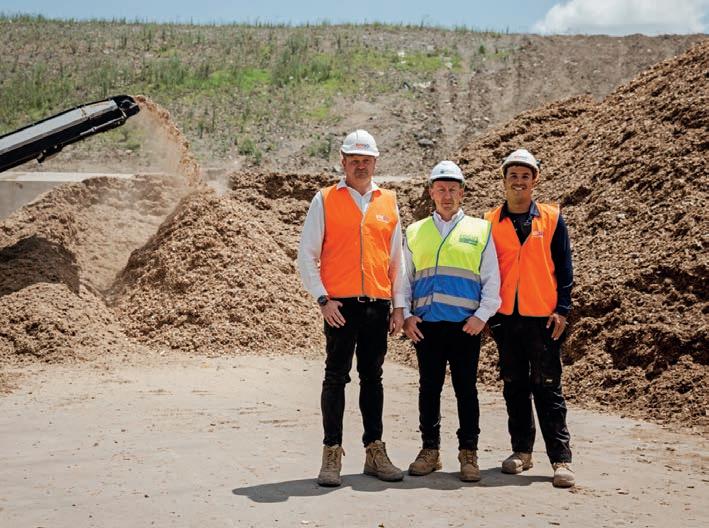
He now helps lead BINGO’s major recycling projects, including the recent end-to-end delivery of BINGO’s Material Processing Centre 2, a $150 million, 300 tonne per hour construction and demolition and commercial and industrial recycling facility, capable of achieving a more than 80 per cent diversion from landfill and the largest C&D advanced recycling facility in the southern hemisphere.
Playing a part in the initial design stages and leading the commissioning, Simon says the project was particularly challenging as the plant was installed and commissioned through the COVID-19 pandemic.
He’s excited by the next challenge –developing a new division for BINGO that he says will improve recovery rates to more than 90 per cent.
BINGO diverts more than two million tonnes per annum of construction and demolition (C&D) and commercial and industrial (C&I) waste from landfill, by producing clean separated materials and recycled products that are then sold to large-scale developments and infrastructure projects to close the loop.
Simon says BINGO achieves an industry-leading recovery rate of circa 80 per cent through its advanced recycling facility, MPC 2, resulting in about 20 per cent of the company’s entire waste network ending up as residual waste in landfill.
With operations along the entire East Coast, it’s this 20 per cent the new division will target, converting it into Refuse Derived Fuel (RDF). RDF is residual waste that has undergone
processing and shredding to ensure it satisfies industry specifications. Many heavy industries including cement kilns, power stations, paper mills, steel manufacturing, sugar mills and energyfrom-waste facilities (EfW) can use RDF as a substitute for coal to meet their emission reduction targets.

Simon says BINGO’s foray into alternative fuels has been in the pipeline for several years, but the project has been restricted by an inability to supply locally.
That changed in 2022, when opportunities to supply alternative fuel to heavy industries arose.
“Dealing with this volume is the perfect introduction for BINGO to ensure it can meet all the quality standards required,” Simon says.
“There are very strict specifications around the materials that can and can’t be used.”
When it comes to processing those materials, BINGO is working with specialist waste and recycling equipment provider FOCUS Enviro.
“We’re committed to enhancing diversion of waste from landfill through creating sustainable products
www.wastemanagementreview.com.au / WMR / 15
Simon Sherwood, BINGO Industries General Manager of Operational Development; John McGuinness, FOCUS Enviro State Manager and Edward Malouf, Production Manager BINGO.
from problematic waste streams,” Simon says.
“I have worked with (State Manager) John McGuinness and the team from FOCUS Enviro for many years. When the opportunity to enter the alternative fuels market was on the horizon I knew John had the experience and processing technology to match.
“Following a trial of the machine on site we knew straight away that the UNTHA was the right machine that could process our material into the specification required and the business would benefit from the unique low operating costs this machine delivers.”
When manufacturing biomass-based fuel BINGO was previously processing wood using multiple shredding steps –slow speed into high-speed systems to try and achieve the fraction size – but this was not commercially viable longterm. The machine breaks down and operational downtime due to tramp material in the feedstock was part of daily routine.
“The switch to a single-step electric drive mobile shredder from UNTHA means BINGO can now transform about 30 tonnes of wood waste per hour with less than six per cent fines and 20 per cent more uptime,” John says.

Simon adds: “We are recovering a further 16 tonnes of clean metals from the magnet belt per week for recycling and resale. The combination of UNTHA’s shredding, backed by FOCUS Enviro’s
service, make this the perfect machine to assist BINGO enter new markets.”
FOCUS Enviro only works with experienced manufacturers and suppliers that specialise in the waste industries and understand the challenges of processing material in these sectors.
John says that as a growing number of opportunities for the manufacture and supply of alternative fuels into local markets become a reality in Australia, he is not surprised to see Simon and the team at BINGO at the front of the pack.
“Previous attempts to produce a specified size piece from hard to shred materials using a diesel-driven mobile shredder was outdated.
“This switch to an electricdriven alternative design, proven in these applications, reduced energy consumption by more than 60 per cent and cost savings of about $185,000 a year,” he says.
“The ongoing journey with BINGO and FOCUS Enviro in commissioning the new shredding system is proof that
16 / WMR / March 2023 COVER STORY
“By increasing diversion of our residual waste stream from landfill, we can produce significant economic, environmental and carbon benefits.”
Simon Sherwood BINGO Industries General Manager of Operational Development
Simon Sherwood, BINGO Industries General Manager of Operational Development, says the new division is finding a solution to divert the company’s last 20 per cent of waste from landfill.
much more efficient and profitable solutions can be delivered while at the same time adhering to the high environmentally conscious principles that are part of the culture at BINGO.
“It has been a pleasure to work with Simon and we are honoured that we have been selected to work on these projects.”
Simon says when he first started working in Australia’s waste industry it was like “stepping back in time”. The standards were well below those of Europe and the UK.
Over the years he’s seen Australia close the gap with the rest of the world, driven by legislation aimed at reducing waste to landfill and achieving a circular economy.
He says it’s rewarding to have contributed to BINGO’s journey in developing new products that are now being sold to customers as alternatives to virgin materials such as BINGO’s Eco-Product range comprising recycled mulches, aggregate and sands.



“Our RDF will assist us in solving for the last mile.”
For more information, visit: www.focusenviro.com.au
www.wastemanagementreview.com.au / WMR / 17
BINGO is aiming to push its material recovery rate to close to 90 per cent.
BINGO is driving for a circular economy by further increasing recovery rates and the quality of recovered products.
DELIVERING A GREENER FUTURE
Komptech CEA is a leading supplier of machinery and systems for the treatment of solid waste through mechanical and mechanical biological treatments, as well as the treatment of biomass as a renewable energy source. Komptech CEA is proud to provide innovative solutions for handling waste and biomass.
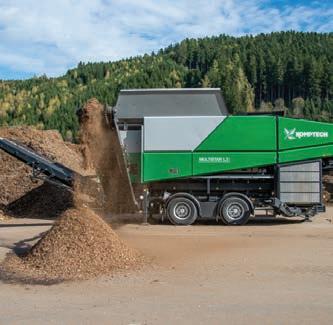
Komptech CEA’s extensive range of products cover all key processing steps in modern waste handling. At Komptech CEA the focus is always on innovative technology and solutions ensuring maximum benefit to the customer. Like to know more? why not speak to one of our team today?
SHREDDERS TROMMEL SCREENS STAR SCREENS WINDROW TURNERS


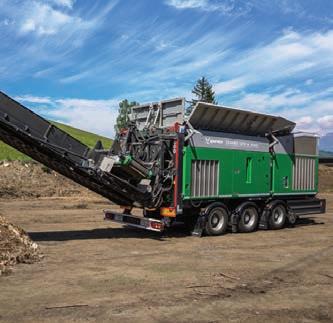
1300 788 757

TERMINATOR
Where Function Meets Technology
A slow-running, single-shaft shredder suited to all types of waste.


CRAMBO
Less Fuel, More Power
Ideal for shredding all types of wood and green cuttings.
TOPTURN X
The Ideal Combination of Performance and Design
With a sturdy frame, powerful hydraulics and large drum, the Topturn X is ready to handle any work situation.
MULTI STAR
Screening with a Star
Makes waste wood and biomass processing highly efficient.
NEMUS
Robust and Reliable
Combining the practice-proven virtues of its predecessors with new solutions for even greater performance.
AXTOR

Shredding and Chipping Made Easy
One of the most versatile machines around for processing wood and green cuttings.
komptechcea.com.au
Fire in the belly
AFTER THREE YEARS OF DEVELOPMENT WORK, BLUE PHOENIX’S FIRST AUSTRALIAN INCINERATOR BOTTOM ASH PROCESSING FACILITY IS READY TO FLICK THE SWITCH.
The opportunity to join Blue Phoenix Group to construct and operate an Australian-first incinerator bottom ash (IBA) processing facility was enough to entice Ian Lynass out of semi-retirement. Three and a half years and several favours later, the industry veteran and now Blue Phoenix Australia, Managing Director, is proud of the successful completion and commissioning of the plant.
The $11.3 million IBA project at Hope Valley in Kwinana, Western Australia is the first in Australia, and the world, to bring all Blue Phoenix technology together in the one plant.

Incinerator bottom ash, the endproduct of the Energy-from-Waste (EfW) incineration process, is due to be received
and processed by the facility in late 2023 when the Avertas EfW plant is completed. Testing material is now being recycled through the IBA plant weekly to enable Blue Phoenix Western Australia to meet its maintenance regime.
“To see this system running with IBA is an exciting period,” Ian says. “The team and I are looking forward to when we can showcase to Australia a proven, sustainable and responsible way to recover and reuse materials otherwise lost to landfill.”
EfW has been a successful and critical component of the waste hierarchy for many years overseas. Ian says it’s a timely and responsible approach for the technology now to be included in Australian waste strategies for the
long term. He says it’s prudent that ‘best in class’ technology is introduced to Australia to ensure a sustainable process is used to liberate the residual metals and aggregates that will contribute value to the nation’s communities.
Blue Phoenix operates IBA processing facilities globally, providing the EfW sector with a responsible and sustainable solution for bottom ash that has been proven over the past 20 years.
The Avertas EfW is expected to process 400,000 tonnes of municipal solid, commercial, and industrial waste under agreements with local governments and other providers in Perth’s greater metropolitan area when it’s commissioned later this year.
www.wastemanagementreview.com.au / WMR / 19
FEATURED TOPIC – ENERGY FROM WASTE
The Hope Valley IBA plant is the first in the world to incorporate all Blue Phoenix technology.
Blue Phoenix will process 100 per cent of the IBA – about 80,000 tonnes per annum – from the plant, recovering metal down to minus two millimetres and returning the residual aggregates into bound and unbound civil applications.
Ian says the process seeks to liberate agglomerated slags and metals to allow for further refinement and valorisation, but importantly the residual minerals are recovered to provide a proven aggregate for reuse in the civil construction industry.
“This facility will also be available to help educate local communities about the recycling of waste and the responsible recovery of construction materials that until now simply end up increasing the landfill debt for future generations,” he says.
For the past 20 years, Blue Phoenix Group in Europe has recovered and safely reintroduced 15-million tonnes of aggregates, predominantly into road base, with no detrimental environmental effects.
It’s a track record Ian and Blue Phoenix are proud of. Ian believes it stems from the company’s commitment to give ash a new life.
He says having all Blue Phoenix’s processing technology in one plant is
unique and in the long-term will allow the company to refine and introduce new technology to achieve greater recovery of metals and improve the quality of aggregates for use in alternate markets.
It is the technical excellence of Blue Phoenix, and a desire to be involved in an Australian-first EfW and IBA project, that appealed to him.
“Coming out of semi-retirement to do this was very meaningful for me,” he says.
“Living locally where these facilities are being built, I was very much focused on making sure things were done the Australian way and done properly with a reliable and responsible company that can assist with continual development.
“The calibre of Blue Phoenix, its leadership and technical ability is renowned. It gave me a lot of confidence in what we were building and who we did it with.”
Ian has lived and breathed the project for three-and-a-half-years from concept to build. He’s proud to have delivered it on time and budget, despite a global pandemic, labour shortages and escalating shipping costs.
The project has used local materials and skill wherever possible and will
be operated for the next 25 years by a local workforce.
Ian is full of praise for the Western Australian contractors who worked on the project and says without them, Blue Phoenix would still be waiting for the contract to be finished.
Kerman Contracting provided the structural design as well as the structural, mechanical and electrical installation. Stantec provided civil design and engineering support and MACS Australia did all civil works. Mechwest and Peritas provided engineering design and 3D modelling.


“They’re fantastic partners,” Ian says. “They were highly flexible, very professional and had a great engineering pedigree and excellent resources in Perth which meant we could get things done.
“Their people on the ground made the difference. They’re dynamically technically astute and delivered with a ‘can do attitude’. This made the difference when issues arose because everyone had a voice and their experience was invaluable.”
Ian says every plant around the world is built to different geographies and technical standards. The Kwinana plant had to account for wind and seismic loading and exacting Australian Design standards, which required more structural steel. This meant that all offshore equipment had to be quality checked and assessed to meet these standards before being delivered to Fremantle.
“Getting this right in WA, which is a tough environment, means we can use this as a benchmark to allow new developments of EfW plants elsewhere in Australia to have a proven partner already operating in the country,” Ian says.
“We expect our next opportunity to partner with a developing EfW to come from the east coast. I’m very excited to see how this unfolds over the coming years.”
For more information, visit: www.bluephoenix-group.com
20 / WMR / March 2023 FEATURED TOPIC – ENERGY FROM WASTE
Testing material is being recycled through the IBA plant weekly to enable Blue Phoenix Western Australia to meet its maintenance regime.
Department of Chemical and Biological Engineering
Monash University

Our motto: Academic excellence and R&D for practical solutions and commercialization
Ranked number 1 in Australia and 48 in the world for Chemical and Biological Engineering

Academic staff with industry and international experience
Internationally recognized research strengths in:
• Bioprocessing and biomaterials
• Catalysis
• Critical metals recovery
• Energy transformation and storage
• Food engineering
• Membrane separation
• Nanomaterials
• Particle technology
• Process design, modeling, and optimization
• Rheology
• Solar cells and DNA-directed nanofabrication
• Waste processing to fuels, chemicals, hydrogen, and metal recovery
Our graduates are employed globally in governments and in industries
• Biotech, Bioprocessing, Pharmaceuticals
• Beverages and Food
• Consultancies
• Chemical, fer tilizers
• Energy, Minerals Processing, and Mining:
• Environment and Water
• Hydrogen, Fuel cells
Welcome Linkedin

Powerful solutions

QUEENSLAND-BASED ENERAQUE IS ON A MISSION TO TRANSFORM AUSTRALIA’S ENERGY SECTOR BY HARNESSING THE POTENTIAL OF WASTE GAS.
The future is here. For the past 40 years, waste gas-to-energy specialist Eneraque has designed, built and operated turnkey waste gas-to-energy systems for a range of commercial applications.
In 2022, it propelled Australia’s gas-to-energy sector to the next level –upgrading biogas to biomethane that will power heating, hot water and cooking for thousands of Sydneysiders.

Jeremy Pringle, Eneraque Director, says the first-of-its-kind biomethane project at Sydney Water’s Malabar Wastewater Resource Recovery Plant is a sign of things to come.
“It’s super exciting,” Jeremy says. “I think it’s the start of some very interesting projects moving forward. We’re definitely at the start of a large curve of projects, mirroring the uptake of biogas technology in Europe.”
Advances in renewable energy technology have made it possible to convert what was once considered waste into a recovered, usable energy source, including the development of landfill gas to-energy systems.
Landfill sites typically use a combination of physical, chemical, and biological processes to manage waste gas disposal. Jeremy says these traditional waste management practices can have negative environmental impacts, can be complicated and expensive, and do not make the most of the waste gas as a potential asset.
“Landfill gasto-energy
technology not only provides sustainable energy for the operation, but its gas capturing methods reduce the release of greenhouse gases into the atmosphere, reduce landfill odour and improve air quality,” he says.
“They can also provide the operation with a return on investment when the resultant energy is used to power the operation or can be converted to electricity and returned to the grid.”
Waste gas-to-energy technology includes biogas power generation, biogas scrubbing and polishing; biogas flaring; biogas storage; biogas upgrading; CO₂ liquefaction; bio-CO₂; and biogas to hydrogen.
Jeremy says there has been increasing interest in gas-to-energy projects throughout the past 20 years as businesses focus on carbon neutral targets and emissions.
In 2022, the Federal Government passed the Climate Change Bills,
FEATURED TOPIC – ENERGY FROM WASTE www.wastemanagementreview.com.au / WMR / 23
Gas-to-energy technology can include biogas scrubbing.
legislating Australia’s emissions reduction target of 43 per cent and net zero emissions by 2050.
“A lot of clients want to, and are, thinking differently about the way they emit,” Jeremy says. “Emission targets are a critical point on a lot of company agendas.”
Eneraque was approached by one of Australia’s leading mega-dairies to provide a bespoke system to convert on-farm waste to energy. The project harnessed the energy value of cow manure to generate electricity, providing the farm with 100 per cent of its energy needs while handling on-farm waste disposal.
Eneraque custom-built a closed-loop power generation plant that feeds directly back to power the farms’ operation, with any extra power capable of being exported to the grid.
At a landfill site in New Zealand, Eneraque was asked to find a more sustainable, cost-effective and streamlined solution for the disposal of waste gases.

The landfill gas will be collected from decomposing waste and sent through a gas conditioning system incorporating biological scrubbing and dehumidification. This gas is then sent through to a reciprocating gas engine to produce electricity that can be used on site or used
in the local electricity network. Jeremy says this system is capable of producing 1.5MW of power and is an example of the renewable technology that is making waves in the sector.
He says that as an Australian owned and operated business, with a manufacturing hub in Brisbane, Queensland, Eneraque is uniquely placed to build world-class equipment designed to perform in the Asia-Pacific (APAC) region’s climate and to Australian standards.
The company portfolio includes a list of waste gas-to-energy projects for commercial applications including agriculture, food and beverage, and waste management – such as landfill sites and wastewater management. Some projects are achieving a return on investment for their clients in as little as five years post build.
The end-to-end service includes consultation, design, engineering, manufacturing, installation, commissioning, operation and maintenance of a site – meaning the client can work with one provider for the entire project. This manages cost, time and creates a seamless delivery of the project.
Jeremy says many clients choose to have ongoing operation and maintenance of their plant performed by Eneraque’s
operation’s team to provide support on a long-term basis.
The company has diversified into gas powered generators, gas flares, gas compression and other gas-related products. Further developments in the sector grew into gas handling opportunities with a focus on natural gas and biogas power generation for remote power, water treatment plants and commercial power generation applications.
As projects have developed, Eneraque has attracted local and international talent, and has built up an in-house engineering team.
Jeremy says the local connection within the APAC region is important for anyone considering a gas to energy project.
“Clients need a partner who understands and is not biased with regards to equipment selection for their project,” he says. “They need to have a partner based in the region that understands the relevant standards and requirements to deliver gas systems into the APAC market.
“What can be purchased as an ‘off-theshelf’ system from overseas won’t meet stringent Australian standards.
“We have to deliver a biogas project to the same standards as a project for a tier one client that is delivering compressor stations across the nation, as an example.”
Jeremy says while turnkey projects ensure an adherence to quality standards, keeping the design responsibility, delivery and final sign-off onshore also helps Australia’s manufacturing industry and employment.
“Eneraque is the gap between what’s working overseas and what can be delivered and developed in the APAC region,” he says.
“I see us as the gap for the end client. They’re not having to work out what products are compliant. We take on that full design responsibility and delivery from start to finish.”
For more information, visit: www. eneraque.com
24 / WMR / March 2023 FEATURED TOPIC – ENERGY FROM WASTE
An Eneraque landfill gasto-energy power plant.



Your E-Waste, Our Responsibility Alex Samsudin alexsamsudin@greentechnologyrecycling.com.au | www.greentechnologyrecycling.com.au
Backed by science
WASTE PROCESSING IS A GROWING AREA FOR MONASH UNIVERSITY’S DEPARTMENT OF CHEMICAL AND BIOLOGICAL ENGINEERING, SANKAR BHATTACHARYA, PROFESSOR AND INTERIM HEAD, EXPLAINS.
With the worldwide emphasis on sustainability and circular economy, there is an increased research and development focus on processing of feedstock and extraction of energy and high-value components from waste materials.
Sankar Bhattacharya, Professor and Interim Head of Monash University’s Department of Chemical and Biological Engineering, says waste processing is now a large part of the department’s portfolio.

Sankar specialises in processing of wastes such as plastics, tyres, paints, optical fibres, e-wastes and agroresidues, as well as extracting chemicals and hydrogen from solid fuels, including biomass.
He sees a future where waste processing is part of mainstream industry as it moves toward circular economy principles and less reliance on imported metals.
“The economics are favourable when compared to disposal to landfill which is becoming increasingly expensive,” Sankar says.
“Wastes of any kind are essentially low-cost feedstock with embedded energy that can be extracted. Some have high-value metals in concentrations comparable, or higher, than in mined minerals and can be extracted by using renewable or low-emission solvents.”
RESEARCH-DRIVEN
The Department of Chemical and Biological Engineering at Monash University is the highest ranked in
Australia and 48th in the world. It is active in education and research and has an international reputation for its research programs and postgraduate
training. The department has 26 academic staff, and more than 150 postgraduate students and prides itself on fundamental and industry-focused
FEATURED TOPIC – ENERGY FROM WASTE 26 / WMR / March 2023
Monash University’s Department of Chemical and Biological Engineering has patented a process for plastics and tyre co-conversion.
research. It has internationally recognised research strengths in bioprocessing and biomaterials, particle technology, process design and optimisation, food engineering, rheology, energy transformation, sustainable processing, nano materials and particle technology.
Sankar came to academia in mid-2009 after two decades in the energy and fuel industry – at the International Energy Agency in France, Anglo Coal Australia and CRC for Lignite in Australia, and Development Consultants in India.
He says the sustainable acquisition, processing, and use of fuels and other energy sources is at the heart of the chemical and biological engineering mission at Monash University.
“In the past, fuels such as coal, oil and wood were burned in air to produce heat and power with little regard to environmental effects. In the future, this unsustainable method will simply not be acceptable,” he says.
Sankar currently leads a group of 16 PhD students and researchers working on gasification of solid fuels, processing of wastes and CO2 to liquid fuel and chemicals, chemical looping for CO2 capture, and high-value platform chemicals production from biomass.
INDUSTRY COLLABORATION
The waste processing research involves reactor design, full process simulation, both small and large-scale experiments and analysis of feedstock and products including solids, liquid, and gaseous.

Apart from a few blue-sky fundamental research, most of the projects to date have been funded by the industry and have involved the processing of end-of-life mixed
polymers, bioplastics and tyres, waste biomass, automotive shredder residues, electronic wastes, battery wastes, waste paints, powder coat paints, spent optical fibres, sub-sea umbilicals, and legacy wastes such as fly ash and CO2 conversion.
The end objectives included fuel and chemicals production, monomer recovery, extraction of metals such as titanium, silicon, and germanium, and increasingly, rare earth and other critical metals.
Sankar says one company is now in discussion to start larger-scale processing of waste plastics because of the department’s research.
“I firmly believe in the processing of end-of-life waste plastics in the shortterm,” he says. “Waste paints and waste biomass will follow.”
Based on the experimental work, process simulation and the technoeconomics analysis, Sankar, and the department, believe there is a future
application for processing end-of-life tyres into liquid fuel.

“The liquid fuel is combustible but not suitable for chemicals production per se,” he says. “A dedicated supply chain needs to exist to make pyrolysis plants viable at defined locations.
“Also, defined regulatory policies in support of pyrolysis process will facilitate the introduction of pyrolysis plants that are technically not complicated.”
Lina Goodman, Chief Executive Officer of Tyre Stewardship Australia (TSA), says TSA has invested in many projects to further tyre recovery and opportunities within Australia, including pyrolysis products.
“We have yet to see large-scale uptake of these processes in Australia. If pyrolysis products reach largescale commercialisation in the future, we are confident the research we have conducted with Monash University will play a role in better understanding the market and its success,” she says.
The Monash University research team is interested in working on more collaborative projects with industry.
For more information, contact: Sankar.bhattacharya@monash.edu
www.wastemanagementreview.com.au / WMR / 27
A waste processing rig designed by Monash University.
Metals recovered from waste paint.
Mastering organics
A NEW EASILY DEPLOYABLE PLANT WILL PROVIDE GREATER OPPORTUNITIES FOR AN ENERGY-FROM-WASTE SOLUTION FROM ORGANIC WASTE.

With the global shift to ‘going green’, waste minimisation and recycling equipment provider Mastershred is turning biowaste into an energyfrom-waste solution that is good for the environment.
Tim Killen, Mastershred Sales Director, says the new Mastershred Organic Waste to Energy (OWE) plant addresses the need to remove load from the power grid by providing a behind the meter decentralised energy solution while reducing carbon emissions.
The result of years of research and development, the OWE plant uses a novel milling and squeezing process to get the most out of biowaste.

The compact plant – the size of a shipping container – is being hailed as an organic waste solution for regional and remote areas.
“This will bring an organic waste and energy solution that is small and deployable,” Tim says.
Australia’s national waste targets aim to halve the amount of organic waste by 2030.
Tim says that the majority of organic waste that doesn’t go to landfill is currently being processed in commercial compost facilities.
While it’s good that organic waste is being diverted, and well-designed commercial compost facilities greatly reduce methane emissions, he says
emissions, particularly CO2, in these settings continue to be a challenge.
“What we’re saying is, we can use that organic waste to create a greater energy source without the same emissions,” Tim says.
“Essentially, to support population growth the world needs more power, and to protect the planet we need less CO2 in the atmosphere. One way to achieve this is through addressing the CO2 generated from our biowaste streams and, where possible, generate additional energy from these streams.”
Mastershred was launched in Australia in 2005 to address a need for waste reduction and recycling equipment that was environmentally responsible and tackled rising costs of waste disposal.
A pilot plant designed at the Mastershred office in Heubach, Germany, was installed at a nearby recycling plant in 2020. With the system fine-tuned for three years the books are now open for orders.
FEATURED TOPIC – ENERGY FROM WASTE 28 / WMR / March 2023
Bio-briquettes can be used to process climate-neutral fuels.
The Organic Waste to Energy (OWE) plant offers a solution that is small and deployable.
Tim acknowledges Mastershred is not the first to develop an energyfrom-waste solution for organics waste. However, he says the previous solutions required a lot of space and supporting infrastructure.
“OWE is a containerised solution,” he says, “it’s decentralised and easily deployable.”
He says the main beneficiaries will be local councils, small and medium-sized industrial operators, wastewater treatment plants and even cruise ships –anywhere that has an excess supply of organic waste and a power generation requirement.
One of the added benefits of OWE is that it’s modular and scalable. Each individual part of the process has its own material recycling stage that removes any impurities such as metal and microplastics.
The first process – milling and squeezing – produces an organic liquid that has a high calorific value suitable for use in anaerobic digestion plants.

Following that, rapid dehydration of the material creates a biomass which, with further amendment, is suitable
for composting, soil improvement or peat substitution. Next, a bio-briquette is created that can be used to process climate-neutral fuels.
The bio-briquettes can be converted into thermal and electrical energy via a gasification process. Mastershred is also investigating the use of briquettes in bioplastics.
Tim says, as the OWE is a closedloop system, any excess gases created from the gasification process are funnelled back into the drying
process, rather than dispersed out to the environment.
When development of OWE started the main goal was organics waste in, electricity out. But researchers found that extracting the liquid not only created another energy source, it reduced the weight of the remaining material, and ultimately CO2 emissions, during transport.
It’s very good technology,” Tim says. One of the added benefits of OWE is that it is adaptable to client requirements. Each stage can be used individually or as an entire process for a full organic energy from waste solution.
“You can process organic liquid, send it to an anaerobic digestor and leave it at that,” Tim says. “But you can also take it to the end process and create power from it.
“It’s also scalable. You can start with one plant and if your volumes increase you can add another container.”
There are several working installations of OWE overseas. A 3D model of the plant will be on show at the Waste 2023 Conference in Coffs Harbour in May in preparation for an Australian launch.
For more information, visit: www.mastershred.com.au
www.wastemanagementreview.com.au / WMR / 29
“Essentially, to support population growth the world needs more power, and to protect the planet we need less CO2 in the atmosphere. One way to achieve this is through addressing the CO2 generated from our biowaste streams.”
Tim Killen, Mastershred Sales Director
Each stage of OWE can be used individually or as an entire process to create organic waste energy solutions.
CRANAB RZ18 with a Marrel AL16 Si54 Hooklift

Cranab RZ18 crane has been designed to provide you with the stability, precision, and efficiency that you need for your everyday handling of scrap or other materials. Cranab are driven by a genuine passion for forestry, recycling and road clearance technology.

Thanks to their booms, they can work close to the carrier and over an increased work area, as well as provide optimum height and lifting capacity.


Coupled with a Marrel AL16 Si54 Hooklift attached, it will allow for more equipment versatility, optimisation, rear hydraulic body locking, tilting frame that acts as a power multiplier and so much more.

Follow us on: BRISBANE | SYDNEY | MELBOURNE | ADELAIDE | PERTH www.600cranes.com.au 1300 551 075
Leading the field
COLLABORATION IS HELPING COUNCILS ACHIEVE BEST PRACTICE LANDFILL OPERATIONS AND REAP ENVIRONMENTAL AND FINANCIAL BENEFITS. LGI’S POWER GENERATION AND FIELD TECHNICIAN SCOTT PRIOR EXPLAINS.
The days when dad would go to the tip and come home with more than he took are a shared childhood memory for Generation X.
As are the mounds of split rubbish bags spilling their contents and the sour stench that clung to the air.
But the oldest and most common form of waste disposal is no longer a set and forget burial pit for waste – they’re well engineered and managed, and a modern gold mine for renewable energy.
LGI is capturing biogas formed naturally in landfills to abate carbon emissions, improve local air quality and, in some cases, generate renewable energy.
Scott Prior, LGI Power Generation and Field Technician, says there’s a science behind what happens at landfills.
“Managing the methane gas output on a landfill site is somewhere between a black art and science,” he says.
It’s his skill at mastering the black art that has Scott, widely known as the ‘landfill whisperer’ in demand to help councils optimise their landfilling practices.
Calling on the vast experience in landfill management of LGI’s workforce, he developed a structured landfill operations training program that is offered to councils. So far more than 70 councils across New South Wales, Victoria, Tasmania and Queensland have used the program.
“There’s three major issues with managing landfills,” Scott says. “Airspace, leachate, and compliance.
“It’s amazing how many people get it wrong.”
A former geologist field assistant, Scott says he fell into waste management when he was offered a winter job as an operator on a tip face. More than 35 years later he’s worked in every aspect of the industry and can’t imagine doing anything else.
“I’ve always had a role in landfill. I’ve worked it right from base level of doing the job on the ground, through to being responsible for budgets,” he says.
“I can not only explain to councils what they need to be doing, but I can show them.”
Since 2013, Scott’s role at LGI covers five landfill sites from Benaraby (Gladstone) to Maryborough, Hervey Bay and Bundaberg. He looks after a combination of gas fields with flares and some with power generators, for burning off and destroying methane to abate carbon.


The two sites with power generation engines enable electricity to be put back into the power grid, creating a dispatchable renewable energy source to displace electricity generation from fossil fuels.
Scott takes his role on each landfill site seriously. He has a plan and manages each site carefully, monitoring remotely and via planned site visits.
He says there are many variables including waste composition, climate, and moisture that impact a landfill site. However, his knowledge of each site, experience and detailed mapping enables him to tune each one effectively.
A typical day will see Scott out on a landfill checking out the gas field against its baseline measures and making minor adjustments. Always looking for ways to maximise output, Scott suggested a management process that
FEATURED TOPIC – ENERGY FROM WASTE www.wastemanagementreview.com.au / WMR / 31
Scott Prior, LGI Power Generation and Field Technician, is widely known as the “landfill whisperer”
reduces the leachate waste and enhances gas production.
He also collaborates with the councils’ landfill management team on each site to ensure planned activities are aligned.
LGI has worked with the Bundaberg Regional Council since 2013 by installing and operating biogas extraction and flaring systems on two sites – Cedars Road and University Drive.
Scott has worked with the council to help optimise landfilling practices. He says the council has increased its maximum waste density by 20 per cent just by ensuring there was a proper compaction pattern.
“Bundaberg had leachate problems in the original cell, a lot of it caused by not stripping out and covering material,” Scott says.
“You need to have a defined space of operation, compact the working face, cover material up, and put fall across the floor to drain toward surface ponds.
“We initiated things that the council hadn’t been doing and within months, anybody observing could see it was more under control. There was no more leachate, and from our perspective, increased gas extraction.”
Kerry Dalton, Co-ordinator Landfill Operations with Bundaberg Regional Council, says the council initially engaged LGI to install a flare at Cedars Road to help reduce methane levels.

In 2016, LGI proposed a biogas capture and carbon abatement project for the University Drive landfill site.
As of May 2022, the projects had captured 54 million cubic metres of biogas, resulted in 514,000 tonnes of carbon abatement, and created 251,000 Australian Carbon Credit Units (ACCUs), combined.

“The results have been really good,” Kerry says. “There’s great extraction from the landfill. For the council, it means we’re compliant and we get the added benefit of ACCUs for the project because
it’s registered under the emissions reduction fund. Rather than releasing methane into the atmosphere we’re converting it to CO2 so there are good environmental benefits.
“It’s ticking all the boxes.”
Kerry says LGI is experienced working with smaller councils and has been with the Bundaberg council every step of the project, from putting a system in place to helping manage it.
“LGI really takes the responsibility out of our hands,” she says. “A lot of councils don’t have the staff or technical expertise to manage that process in-house.
“LGI are very good to deal with.”
She encourages other regional councils to consider biogas capture from landfill, not only for compliance, but also the environmental and financial benefits. “It’s a real feel-good project,” she says.
For more information, visit: www.lgi.com.au
32 / WMR / March 2023 FEATURED TOPIC – ENERGY FROM WASTE
Bundaberg Regional Council’s Cedars Road landfill site which has a biogas extraction and flaring system.
THE PHOENIX HAS LANDED IN AUSTRALIA

The Phoenix is an extraordinary mythical creature. At the end of its life when just ashes remain, something magical happens. New life merges out of something that seems lifeless. What we consider to be the end, suddenly transforms into a new beginning. We give ash a new life in the real world.
Mr Ian Lynass, Managing Director Ianlynass@bluephoenix-group.com
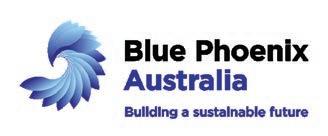
What we do
The ash in our line of business comes from the new Energy-from-Waste facility Avertas Energy. Incineration of municipal solid waste (MSW) is an effective way to reduce waste volume and reduce our reliance on fossil fuels for energy.
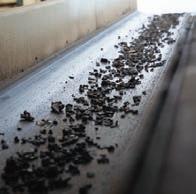
How we do it
We process the remaining ash and extract valuable resources. With our state-of-the-art technology we recover metals to produce a secondary aggregate used for civil construction work. Environmental protection is at the forefront of our day-to-day operations. We assure the proper use of aggregates, limiting the impact on the environment.


Why we do it
We believe our work is only valuable if it contributes to a better future. We prevent landfilling and the negative impacts associated with the extraction of virgin raw materials by producing a secondary aggregate that contributes to the circular economy.
 Blue Phoenix Australia
Blue Phoenix Australia
0418 290 080 | www.bluephoenix-group.com
Better information, better recycling
GREEN TECHNOLOGY RECYCLING’S ALEX SAMSUDIN IS HARNESSING THE POWER OF TECHNOLOGY AND DATA SCIENCE TO IMPROVE E-WASTE RECYCLING IN AUSTRALIA – AND HOPES THE INDUSTRY WILL JOIN HIM ON THE JOURNEY.
Alex Samsudin never set out to build a career in e-waste recycling. He started dismantling electronics as a source of income in 2009 to support his software engineering studies at Canberra’s Australian National University – and he never stopped.
Since December 2020, Alex has been Director of Green Technology Recycling’s (GTR) ACT branch – a business he started as an offshoot of GTR’s New South Wales branch, which is run by his business partner.
At GTR ACT, Alex is putting his software engineering background to
use – combining his skills and industry experience to prototype an integrated software solution that he hopes could benefit the Australian e-waste recycling industry.
“At first, I started building a system just to make my own life easier as a small business owner,” he says.
This started as a means to automate some of the menial administrative tasks involved with data destruction, warehouse management, and generating reports.
“The other problem we had from the very start, is we could find no single point of reference to help identify and manage
the many different types of materials –there’s no Wikipedia for e-waste,” Alex says.
“To recycle e-waste properly, you are also required to be able to track exactly where it comes from, where it’s going, and what’s happening to it.”

Alex says some software solutions existed for certain tasks – and some worked well – but he found using a cobbledtogether system of different software solutions cumbersome.
“Coming from a software engineering point-of-view, I knew there was a way we could make everything more integrated,” he says.
“By now, I think the processes for managing e-waste should be a lot more advanced, especially because it’s a waste stream that’s always changing.”
This combination of factors has led Alex to develop a prototype platform he calls AWESOME.
“It’s ‘AWESOME’ because it’s an Automated Waste Enterprise System that’s Online, Modular, and Easy to use,” he says.
INTEGRATED AND VERSATILE
The AWESOME platform is made up of seven primary modules, including systems for managing customer relationships; warehouse and inventory; work health safety; documents; reporting; data administration; and compliance.
Alex says AWESOME is designed to
FEATURED TOPIC – E-WASTE 34 / WMR / March 2023
The AWESOME platform integrates inventory management, downstream tracking, compliance data, and more.
be modular, scalable, and customisable; while also easy to “plug and play” for businesses, with web-based options for maximum portability.
“A business can choose to implement all modules, or just a subset of modules depending on its needs,” Alex says.
“No module relies on another, so you can plug and play as you need. If you still want to use an external document manage system, or you have a subscription to a different warehouse management system –go for it.”
Alex acknowledges that some businesses are protective of their data, and are not always comfortable using cloud services.
“We don’t take data security for granted,” he says. “If they like, a business could just run it locally in their warehouse – they don’t have to connect it to the internet.”
STREAMLINED COMPLIANCE
“Working in e-waste, there’s a lot of compliance and standards you need to follow,” Alex says.
“My platform closely follows the AS/NZS 5377 and ISO 9001 certification guidelines.”
Combined, these standards outline the minimum requirements for safely collecting, managing, and recycling e-waste material in Australia and New Zealand. These include maximising material recovery, protecting the health of workers, and minimising harm to the environment.
Alex says streamlining audit processes could be a key benefit of an integrated platform such as AWESOME.
“I’ve been through the same kind of audits for the past seven years, and they are always looking for the same things – they tend to follow the same kind of flow and structure,” he says.
These can include the downstream tracking of recycled materials, staff training, data security, and risk management, to name a few.
Alex says his platform could be used to generate any necessary data or reports with the click of a button, rather than
having to dig through a mishmash of Excel spreadsheets, emails, virtual and physical documents.
“I think any e-waste company – or any other sort of company that goes through similar certification processes – will feel the same way I feel,” he says.

OPPORTUNITY FOR COLLABORATION
Alex says his platform is still in its prototype stage, and work on it will be ongoing – but as a system designed to evolve and grow with the industries it serves, AWESOME will always be a work in progress.
He also thinks it could present an opportunity for the industry to work together for mutual benefit, and to improve the quality of e-waste recycling overall.
“Everybody wants to recycle, and
everybody wants to do it the right way,” he says. “So, we should be trying to find common ground.”
Alex says there’s a great deal that businesses could learn from each other without compromising their operations. Establishing a standardised resource for e-waste information and data could be valuable – and something his AWESOME platform could help facilitate.
“It’s all about information sharing. My system is just intended to help point people in the right direction – whether that’s a business, a governing body, an auditor, or the public,” he says.
“If they have a question to ask about e-waste recycling, they can find the answer, or at least the right direction to go to find it.”
For more information, visit: www.greentechnologyrecycling.com.au
www.wastemanagementreview.com.au / WMR / 35
“Everybody wants to recycle, and everybody wants to do it the right way. So, we should be trying to find common ground.”
Alex Samsudin, Green Technology Recycling ACT Director
Green Technology Recycling ACT Director Alex Samsudin.
A shred of hope
SHRED-X IS PROVIDING E-WASTE RECYCLING SOLUTIONS BUILT FOR SUSTAINABILITY.
Nearly every electronic or IT device a business uses contains materials that can be recycled into new product components. Almost 100 per cent of electronic devices – computers, tablets, hard drives, mobile phones and printers – can be recycled once they reach the end of their useful life if done through the correct channels.
Steven says Shred-X has partnered with Australian recyclers to divert e-waste from landfill, recovering valuable resources such as lead, copper, aluminium gold and titanium and alleviating the reliance on increasingly scarce virgin materials.
Data breaches of several top tier organisations in 2022 catapulted cyber security into the nation’s conscience.
In response, more entities are adopting General Data Protection Regulation (GDPR), designed to safeguard personal information and data. Despite extra vigilance surrounding security, redundant IT equipment can hold data that can compromise individuals, a business, its customers or employees.

Steven Batumalay, Shred-X ITAD Solutions and Relationship Manager, says more awareness of data security, from both the general public and businesses, has created opportunities for e-waste service providers.
Shred-X has built its reputation on securely destroying data. Having started in 1999 within the paper recycling industry, Shred-X evolved to provide a range of destruction and recycling solutions for a myriad of materials other than paper, including IT and data assets, media,

uniforms, dated or contraband products, used coffee cups and QSR (Quick Service Restaurant) waste, textiles and clothing, ensuring ethical landfill diversion for materials which previously had no other disposal alternative.
Shred-X’s expertise in providing IT asset disposition (ITAD) and e-waste recycling services has been sought after by many global partners within the Asia Pacific region. Expanding it’s footprint, in November 2022 Shred-X acquired RCube Solutions, an Australian-owned and managed ITAD company focused on e-waste diversion from landfill and mitigation of data theft.
“Shred-X has been one of the fastest growing companies in the e-waste and secure data destruction industry,” Steven says.
“It’s been making the right technology and resource investments to service clients and with a focus on providing sustainable and environmentallyfriendly solutions.”
It’s widely recognised that e-waste is a global problem – the United Nations estimates that only 12.5 per cent of the 20-50 million tonnes of electronic waste worldwide is recycled, with the rest ending up in landfill or cluttering up homes and offices. Those discarded in landfill not only pose a risk for the data stored, but can leak dangerous chemicals into the environment with devastating effects on local communities and wildlife.
Steven says there’s more awareness in Australia regarding how e-waste should be treated and recycled responsibly, largely due to government restrictions on exporting e-waste to developing countries, and a focus on corporate Environment, Social and Governance (ESG) policies.
“E-waste is the fastest growing waste industry not only in Australia but globally,” Steven says. “Hence there is more and more investment from local and international businesses and government, which is great for the Australian economy.”
Shred-X aligns itself with five of the United Nations Sustainable Development
FEATURED TOPIC – E-WASTE 36 / WMR / March 2023
IT asset recovery is a sustainable option to help businesses maximise their IT investment.
Goals (SDG’s), that were first implemented into the global sector in 2016. Shred-X is actively invested in these goals with one of its SDG’s being SDG 9: building resilient infrastructure, promoting sustainable industrialisation and fostering innovation.
Steven says it is part of the organisation’s ethos to help companies achieve their targets by finding a new home for waste besides landfill.
He adds that while e-waste recycling is a positive disposal method ensuring that precious metals and components are recycled, an alternative sustainable option is to repurpose or reuse IT assets. The IT asset recovery service is one of the initiatives Shred-X has implemented to help customers maximise their IT investment in technology hardware through the asset buyback program.
Steven says for electronic assets containing data, repurposing is possible
JCB WHEEL LOADERS


after a process called data sanitisation. Sanitisation involves a multiple pass data overwriting process to ensure that data cannot be retrieved through commercially available data recovery processes.
“Our e-waste repurposing alternatives deliver a compliant, sustainable solution to end-of-life asset management plan and is one that can also be integrated into a business’s corporate social responsibility project,” he says. “With a national customer base of more than

PROVEN RELIABLE AND PRODUCTIVE
20,000 Shred-X can help businesses to securely manage their e-waste and at the same time improve their bottom line by tapping into any unrealised value in their spent technology.
“The Shred-X solution promotes a circular economy, providing environmental sustainability and financial benefits to business.”
For more information, visit: www.shred-x.com.au
1300 522 232 jcbcea.com.au
 Shred-X has partnered with Australian recyclers to divert e-waste from landfill.
The JCB range of wheel loaders are built to be strong, reliable and provide comfort for long days in the cab. Designed for ultimate productivity, and offering superb performance the JCB wheel loader range features best-in-class comfort, visibility, safety ergonomics and superior serviceability plus a whole lot more.
Shred-X has partnered with Australian recyclers to divert e-waste from landfill.
The JCB range of wheel loaders are built to be strong, reliable and provide comfort for long days in the cab. Designed for ultimate productivity, and offering superb performance the JCB wheel loader range features best-in-class comfort, visibility, safety ergonomics and superior serviceability plus a whole lot more.
2023






A year in which anything is possible
Let’s continue inventing the world of tomorrow together...
What if...
Putting more tech in Scipher Technologies
SCIPHER TECHNOLOGIES, A LEADING E-WASTE RECYCLING COMPANY, IS SETTING NEW STANDARDS FOR ESG REPORTING IN THE INDUSTRY. EXECUTIVE DIRECTOR CHRIS SAYERS EXPLAINS.
E-waste specialist Scipher Technologies is putting the “G” into ESG (environmental, social and governance) reporting.
Scipher Technologies, with current operations in Melbourne and Perth and plans to expand to Sydney, aims to lead the way in responsible e-waste management through safe and advanced raw material recovery processes providing circular economy-driven outcomes.

The company’s newly developed waste tracking and reporting system, Sciphertech allows for full traceability of e-waste throughout the recycling process, generating transparent and verifiable reports on performance and outcomes for clients and partners.
Chris Sayers, Executive Director of the firm, says the Sciphertech system puts his company ahead of the game.
“The recycling industry is developing rapidly in Australia,” Chris says. “The provision of accurate and auditable data will help avoid the risk of green washing across the industry.
“At the core of Sciphertech is governance. We take governance and reporting seriously and are making sure that the information we release to the market, regulators and our clients is fully verifiable.
“We’re raising the bar of expectations that clients can have of the recycling industry.”
Australia is one of the world’s largest producers of e-waste per person, but most of it still ends up in landfill or is traded overseas at end-of-life.
Victoria, South Australia, and the ACT have all banned e-waste from landfill in a bid to encourage resource recovery as
Australia transitions to a circular economy. Other states are expected to follow suit.
Chris says Scipher Technologies operates some of the most advanced and commercially proven waste processing technology available.
The company works with waste management companies, councils, schools, large corporate and small-tomedium businesses to help them achieve circular-economy-driven solutions for their end-of-life products, in the form of recycling, product stewardship and material recovery targets.
He says that as investors and businesses increasingly put more emphasis on ESG aspects of their operations, clients are seeking to understand what happens to their materials after they’re sent to a recycling facility. “They want to see the outcomes,” he says.
FEATURED TOPIC – E-WASTE www.wastemanagementreview.com.au / WMR / 39
Sciphertech allows for full traceability of e-waste throughout the recycling process.
“Clients are expecting a high level of reporting and details.”
Enter, Sciphertech. Tailored to track waste through complex recycling and de-manufacturing processes, Sciphertech provides clients a detailed report that can include an analysis of different types of e-waste processed, what category and quantities of materials are recovered, where the material ends up downstream, and what that equates to in diversion from landfill.
“For every 100 kilograms of waste that we process, we reconcile back and track exactly where it ends up,” Chris says.
“We can set up tailored reports for customers to feed into their own ESG reporting requirements. We can easily capture the right data when different types of waste enter our facilities, and provide it
back in meaningful and accessible formats for clients.
“Collating, analysing and generating reports that are verifiable is critical for us.”
Chris says the Sciphertech information system was developed because there was no off-the-shelf product that could provide the level of detail the company was seeking. Management worked with a software development partner to custom build the system with the functionality needed now, but also has ability to adapt and update it as market and regulatory requirements change.
It’s taken about six months to get the system to the stage where the first detailed reports are being produced. The system is under continuous development and will soon be able to provide verifiable carbon abatement data at a batch-processing level.
“We recently presented Sciphertech and its capabilities to an ASX-100 listed company that is keen to adopt the system for its own ESG reporting purposes,” Chris says.

He says it’s the quality of data able to be extracted that sets Sciphertech apart. Scipher Technologies uses dry and mechanical recycling technology, opposed to energy-intensive or chemical-based processes. This means that when material is processed through each step of the separation and recovery process it remains in a constant state, and can be quantified.
Materials recovered include ferrous metals such as steel and iron; non-ferrous valuable metals such as copper, aluminium and zinc; precious metals; glass; plastics; and printed circuit boards.
“When we report back to clients that we’re achieving a particular material recovery rate, it’s all verifiable,” Chris says. “We don’t lose any material throughout processing.”
Sciphertech’s ability to provide in-depth analysis is already shifting the way clients think about their e-waste and the potential for circular economy solutions.
One client now understands the plastic content of their waste and is searching for re-manufacturing solutions. Chris says not only does the client now understand the composition of the product they’re recycling, but they know the type of plastic and the solutions that are available for value added uses of their recovered materials. Sciphertech has been key to discussions with a specialist manufacturer in formulating a solution to use the recovered plastics for input into new products.
“We wouldn’t be in that position without this data,” Chris says. “It’s about raising the bar, keeping the industry moving forward and advancing the circular economy.”
For more information, visit: www.scipher.com.au
40 / WMR / March 2023 FEATURED TOPIC – E-WASTE
Sciphertech reports can be tailored for individual client ESG requirements.
“When we report back to clients that we’re achieving a particular material recovery rate it’s all verifiable.”
Chris Sayers, Executive Director Scipher Technologies
Sciphertech, a gamechanger for ESG reporting
E‑waste Recycling
IT Asset Recovery
Solar Panel Recycling
Accurate, auditable, accessible, Scipher’s new, advanced waste tracking and reporting system, Sciphertech, sets a new benchmark for ESG reporting.
MELBOURNE PERTH SYDNEY
scipher.com.au
To support population growth the world needs more energy, however, to protect our planet we need less CO2 in the atmosphere and one way to achieve this is through addressing the CO2 generated from our biowaste streams, (currently estimated to be around 13 million tonnes of CO2-e carbon dioxide equivalent in Australia alone) and where possible generate additional energy from these steams. Therefore, generating climate-neutral decentralised energy from biowaste seems like the logical solution. Of course, we are not the
rst to company to think of this, however, the previous solutions required a lot of space and supporting infrastructure. Mastershred has addressed these challenges by designing a decentralised, easily deployable, closed-loop, compact plant, perfectly suited to regional or remote areas that generates energy from biowaste through a unique process which removes impurities such as metals and microplastics and as a by-product produces biochar suitable for use in land aggregation.
Organic LiquidBiomass

Stage one produces a fermentation substrate with high gas formation potential and low solids content which makes if perfect for use in anerobic digestion plants

Stage two produces a rich biomass which can be further processed for compositing, soil amendment and peat substitution


Organic BriquettePower Generation

After vacuum drying and compression bio-briquettes are formed which can be used to process climate-neutral fuels or for the manufacturing of bio-plastics

Finally the bio-briquettes can be converted into thermal and electrical energy via a gasi cation process
The OWE reduces the problem of processing biowaste and expands the possibilities of energetic and thermal recovery from this waste. Due to its easily deployable design the OWE will be of particular bene t for those in remote or regional areas as well as public and private waste management companies, local councils, small and medium-sized industrial enterprises, hotels, leisure resorts, cruise ships, wastewater treatment plant operators and any business or Government agency that has an excess supply of biowaste and a power generation requirement.
the Mastershred
energy “OWE” plant.
The future of waste to energy has arrived! In the form of
organic waste to
There are four stages of the OWE with each stage of the process providing its own energetic and material recycling bene t.
DESTRUCTION AND WASTE SOLUTIONS TM Get in touch with us today to start your energy from organic waste journey with the Mastershred OWE Plant sales@mastershred.com.au 1300 859 471
1234
The Mastershred OWE plant was designed to generate climate-neutral decentralised energy from biowaste.
Pushing the boundaries
LOGISTICS AND COLLECTION ARE A CORE COMPONENT OF REMONDIS’S OPERATIONS, BUT RESOURCE RECOVERY IS FRONT AND CENTRE OF EVERY BIG DECISION.
When you’ve been in the global waste management and resource recovery game as long as REMONDIS – established in Germany in 1934 and here in Australia since 1982 – the result is an accumulation of experience and expertise that enables smart, longterm strategies.

With 24,000 commercial and industrial customers, 1100 employees across Australia, a fleet of more than 560 heavy vehicles, and game-changing resource recovery management practices across municipal, commercial and industrial sectors, REMONDIS is positioned to handle all manner of logistics and resource recovery challenges across the entire value chain.

The company has found that success in commercial collection logistics increasingly requires a full-service approach enabled
by post-collection recovery and processing solutions – plus productive collaboration with customers, government, industry, and community.
Susie McBurney, REMONDIS General Manager New South Wales/ACT, says that while logistics and collection capability is a substantial and core component of REMONDIS’s operations, resource recovery is generally front and centre of every big decision.
“Customer expectations are changing rapidly, so while trucks and bins are the most visible aspect of commercial waste collection, more and more it’s what we do with the material we collect, that counts.
“Happily, new technology and our innovation investments are enabling us to push new boundaries in terms of landfill diversion with gains right along
the value chain. Given that we operate in more than 30 countries around the world and operate 39 service locations here in Australia for 24,000 customers, we’ve got the luxury of being able to draw from so much,” Susie says.
“For example, in Europe we are operating whole fleets based on alternative fuel. That’s a story for another day.”
NEW RESOURCES
Late in 2022, REMONDIS opened a new, $22 million resource recovery facility at Tomago in the Hunter region of New South Wales.
“Beyond enabling us to double the amount of waste we handle in the Hunter, our new Tomago Resource Recovery Facility has a centrepiece Refuse DerivedFuel (RDF) facility which processes waste into a solid fuel that can be used for energy-

FEATURED TOPIC – WASTE COLLECTION www.wastemanagementreview.com.au / WMR / 43
REMONDIS has a fleet of more than 560 heavy vehicles across Australia.
making in industrial settings,” Susie says. “In addition to being a cleaner alternative to the burning of fossil fuels, the facility makes invaluable reuse of waste that might otherwise be buried.
“It’s a game-changing extension to our core collections operation which creates environmental, community and commercial benefits.”
FOCUS ON ORGANICS
REMONDIS Group has more than 80 organic recycling facilities around the world, and the company is keen to deploy that expertise into Australia.
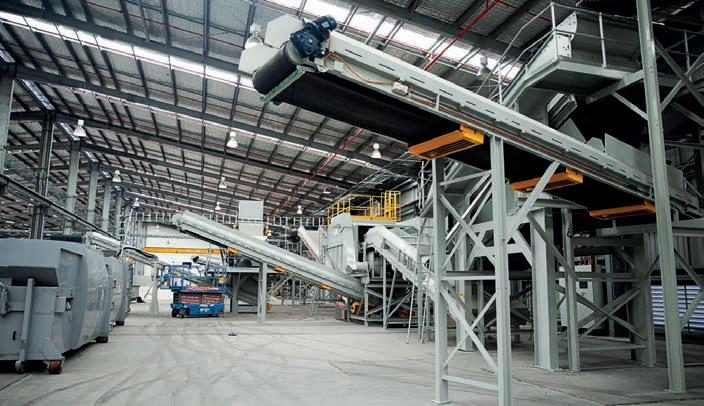
“A big local success story is our Lake Macquarie Organics Resource Recovery Facility at Awaba, NSW,” says Susie.
“What started as a small operation to test local appetite for organics recycling has burgeoned into something people can’t get enough of. Community demand for greenbin organics recycling means food scraps and garden waste that was going into the ground is now being used for landscaping, farming, and erosion control.
“Last year the facility was awarded two million dollars in federal and state government funding to support expansions that will lift processing capacity by 16,000 tonnes to 60,000 tonnes and assure operations for another 20 years.”
REMONDIS was the first company to start up large-scale composting operations in Australia, implementing European
tunnel composting technology at Port Macquarie in 2000.
Susie says customer demand for organics solutions is growing, enabled by legislation; the challenge for the industry is stable access to organics-capable transfer stations and organics processing infrastructure.
COLLABORATION IS KEY
The company’s local experience confirms that collaboration is a key driver for success in commercial collection logistics operations, balancing environmental, community and commercial goals.
Chris Gusenzow, REMONDIS General Manager Western Australia, says there can be misconceptions that big waste management companies are the be-all-andend-all when it comes to achieving what most people want – reducing landfill and enhancing the circular economy.
“Actually, we’re all part of a larger, shared system,” he says. “Everyone from government to industry and right down to mum-and-dad consumers need to appreciate the complex dynamics behind the scenes and be on board for change to happen. Our most progressive customers understand this.
“Broad-based education campaigns are important so more people understand that most waste has a value and can have a second life.
“Legislation and regulation are also important. In Europe, source separation is
significantly different to Australia because of regulatory mandates. Many private homes are legally required to separate waste into eight or more separate streams before collection, making the down-the-line recycling process super-effective. At many Australian homes there are only two bins to choose from, or co-mingled bins, and even then, there can be confusion around what goes where.”
The irony – and opportunity – Chris says, is that most Australians want to do the right thing when it comes to recycling but they either don’t know the facts or they’re cutting corners for the sake of convenience. All that can change in one fell swoop if separating rubbish at home or at depots close to their homes becomes a legal requirement, and if such change is backed up by education.
Chris emphasised that there was considerable room for governments and industry to expand successful recycling initiatives.
“Container Deposit Schemes – whereby government and industry create cash refunds for containers and set up collection points to boost recycling – are a clear winner in Australia and a great example of what innovation-driven collaboration can achieve,” he says.

“As a major participant of Western Australia’s Container Deposit Scheme, REMONDIS can vouch that the initiative has seen beverage container recycling go through the roof, noting that such containers have previously accounted for nearly half of all litter in WA by volume.”
Being part of success stories like these is a powerful motivator for the company’s 1100 Australian employees, who span the country from Weipa on the Cape York Peninsula in Far North Queensland to Wingfield in South Australia, west to Jandakot, and east to Seven Hills in Sydney.
“We call it ‘working for the future’,” says Susie, “and we mean it.”
For more information, visit: www.remondis-australia.com.au
44 / WMR / March 2023 FEATURED TOPIC – WASTE COLLECTION
REMONDIS opened a new, $22 million resource recovery facility at Tomago in 2022.




Recognising excellence across the waste, resource recovery and recycling sectors. 2023 NOMINATIONS ARE NOW OPEN www.wasteawards.com.au/nominations To nominate visit 25 OCTOBER 2023 SPONSORS HELD IN CONJUNCTION WITH
The next level
600 CRANES’ ACQUISITION BY TUTT BRYANT EQUIPMENT IN 2021 HAS ENABLED THE BUSINESS TO EXPAND WITHOUT COMPROMISING ITS FOUNDATION OF FAMILY VALUES. NATIONAL SALES MANAGER JUSTIN CLARKE EXPLAINS.
Since it was established in Melbourne in 2001 by the husband-and-wife team of Tony and Mary Henson, 600 Cranes has endeavoured to maintain its family business identity.
As the sole Australian distributor for Fassi Cranes’ knuckle-boom range – with brands such as TAM, Marrel, Jekko, and Idrobenne also under its belt – 600 Cranes has since grown into one of Australia’s leading suppliers of cranes and accessories.

When the Henson family handed over the reins of 600 Cranes to Tutt Bryant Equipment in early 2021, the two companies set in motion a 15-month integration process – one that aimed to strengthen both brands without compromising existing customer and supplier relationships.
600 Cranes National Sales Manager Justin Clarke says this reflects the shared values of the two companies.
“It was husband and wife managed right up until Tutt Bryant came on board, and I think that has always set 600 Cranes apart – that personal aspect,” he says.
“And that’s something Tutt Bryant has been keen to maintain. 600 Cranes can take advantage of Tutt Bryant’s expertise and industry presence, but still operate with that same customer focus.
“Dealing with 600 Cranes still feels like dealing with a family company. I think that’s important and it’s what customers want. You’re never just a number.”
Justin says this synergy between 600 Cranes and Tutt Bryant is also
reflected in how the businesses value their employees.
“A lot of people at 600 Cranes have been with the company for a long time – and that’s something I see with Tutt Bryant as well. Both like to promote from within,” Justin says.
“There are a number of people at 600 Cranes that started off in smaller roles and have progressed their careers and grown along with the company.”
Justin himself has lived this experience, having started his career as an apprentice
trader’s assistant in a 600 Cranes workshop more than 12 years ago.
CERTIFIED SOLUTIONS
According to Justin, the addition of 600 Cranes is a slight diversification for Tutt Bryant, representing the company’s first foray into manufacturing – an important part of 600 Cranes’ service offering.
“You can’t just bolt a crane to a truck,” Justin says. “You need to make sure it’s stable, build a sub-frame, reinforce certain areas. Every crane that gets
WASTE MANAGEMENT IN ACTION – CRANES 46 / WMR / March 2023
Cranab’s RZ18.2 is designed to allow attachments to remain connected when in transport mode.
fitted requires a state representative installation plate.”
While these certification processes vary from state to state, Justin says 600 Cranes has approved people at each branch
to ensure every crane sold is certified in-house.
“Our head office is in Melbourne, and we have branches in Sydney, Brisbane, and Perth – all offering full service and workshop facilities – as well as agents throughout Australia,” he says.
SPACE FOR WASTE
600 Cranes has recently started distributing products from Cranab – a Fassi subsidiary that focuses on cranes tailored to higher frequency use applications such as waste management.

“We just put out the first of their units late last year, the Cranab RZ18.2,” Justin says. “It’s a unique crane that folds up in the opposite direction.
“Normally, with a knuckle-boom crane, the outer boom will tuck in and under. Whereas this Cranab folds up and back on itself – it’s purpose-built for both waste management and logging applications.
“The big advantage of this design is it allows an attachment to remain on the crane while in the transport position, meaning it doesn’t have to be removed and reattached before you start the next job.”
This design offers potential upside for waste management in particular, where
Justin says attachments such as grabs, buckets, or clamshells are common.
“The Cranab is also rated for a higher duty cycle,” he says. “Waste cranes often work hard. They’ll be posted up on site where they’ll do bucketload after bucketload without much downtime.”
One of the first Cranab RZ18.2 units 600 Cranes sold and installed was paired with a Marrel hooklift on the same truck – something Justin says is an example of the tailored solutions 600 Cranes offers.
“It’s generated a lot of interest – and inquiries have increased dramatically since that unit was put out into the public,” Justin says.
With demand booming, Justin believes the addition of Tutt Bryant’s Australiawide support and spare parts network, as well as greater buying power, will help 600 Cranes offer its customers a more comprehensive service than ever before.

“We’re now really starting to tap into that ability,” he says. “And what’s more, I think Tutt Bryant’s extensive industry leadership and experience will keep filtering down and really help take 600 Cranes to the next level.”
For more information, visit: www.600cranes.com.au
www.wastemanagementreview.com.au / WMR / 47
600 Cranes provides tailored solutions with manufacturing capabilities across Australia.
The good fight
THE CHANGING FACE OF ISUZU’S PACKAGING PUSH IS ALREADY WELL ADVANCED AND THE COMPANY IS DETERMINED TO MAINTAIN THE PACE.
Isuzu Australia Limited (IAL), like many companies dealing with large amounts of freight packaging, has taken the pledge to meet The Australian Packaging Covenant’s (APCO) 2025 targets and is making solid strides towards this goal.

Acting on several fronts, Isuzu has already reached the overall APCO performance rating of, ‘Advanced,’ putting it well on track for its 2025 obligations.
APCO’s 2025 targets include 100 per cent reusable, recyclable or compostable packaging; 70 per cent of plastic packaging being recycled or composted; 50 per cent of average recycled content included in packaging; and the phaseout of problematic and unnecessary single-use plastics packaging.
An Isuzu spokesperson said IAL has been making steady, continuous improvements to ensure it hit the targets comfortably, without disruption to critical day-to-day operations.
CHANGE STARTS AT HOME
To get a sense of the scale of IAL’s packaging footprint, one needn’t look further than the company’s vast parts facility in Truganina, Victoria.
At 15,000 square metres, it holds in the vicinity of 35,000 lines of stock across 33,000 locations within the space.
The team picks an average of 2500 lines of inventory every day, which equates to more than two and half million lines every year. From that, more than 70,000 freight consignments are
shipped-out every year. Recent calculations indicate that the Isuzu parts operation picks, packs and ships about 7,300,000 kilograms of parts every year, with this figure growing annually.
Needless to say, that’s an enormous amount of packaging coming in from the parent company in Japan and going out across the Oceania region including Australia, New Zealand and the Pacific Islands.

GRADUAL CHANGE
An Isuzu spokesperson says it’s been critical that the adoption of APCO compliance be pioneered from the ground up.
Isuzu’s parts department has reused or recycled about 90 per cent of all packaging that comes in from overseas, which is an enormous quantity of material being kept out of landfill and in circulation.
Out-bound bubble wrap is now made with up of 30 per cent recycled material while itself remaining fully recyclable.
With biodegradable packaging tape and recyclable shrink wrap to be introduced this year, the supply chain department is challenging itself to go as
WASTE MANAGEMENT IN ACTION – PACKAGING 48 / WMR / March 2023
More than 70,000 freight consignments are shipped out from Isuzu’s Truganina facility every year.
The supply chain department is challenging itself to go as green as possible.
green as possible. Additional initiatives include packaging type reductions, and an expanded use of recyclable packaging that features the universal 100 per cent Recycling mobius logo.
Anything that can be recycled is separated and reused to send componentry out to Isuzu dealerships and other items are disposed of as per APCO protocol.



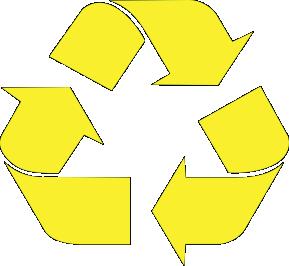


The packaging that leaves the warehouse is, for the most part, made from recycled material that can all be reused and recycled.


All of this is monitored by an inhouse APCO committee with all Isuzu departments represented. This way, the entirety of Isuzu is moving towards a greener future together.

APCO’s 2025 deadline is a milestone, not a finish line and Isuzu has no intention of allowing standards to slip.


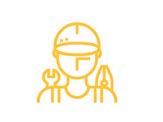
Isuzu’s vast dealer network has enthusiastically embraced the program too, with many investigating additional ways to reduce and reuse throughout their own localised supply chains.
For more information, visit: www.isuzu.com.au

26 Blue
Drive, Luscombe, QLD 4207 (07) 5629 0092
Rock
Isuzu’s adoption of APCO compliance is being pioneered from the ground up.
Veolia awarded $280M contract
A LONG-TERM PARTNERSHIP BETWEEN VEOLIA AND THE CITY OF GOLD COAST IS SET TO HELP THE CITY REACH AMBITIOUS RESOURCE RECOVERY TARGETS.
Veolia, a benchmark company for ecological transformation, has been awarded a $280 million contract to operate several of the City of Gold Coast’s recycling, resource recovery and waste management facilities.
As part of an initial seven-year contract with the City, Veolia has committed to a five per cent improvement to the Gold Coast’s recovery rates by 2025, through optimised waste management and increased recycling. From May 2023, Veolia will operate up to five of the

region’s essential resource recovery facilities, including three community waste and recycling centres, and two landfills.
Veolia will also run 14 logistics vehicles and work with the region’s social enterprise organisations to drive further environmental outcomes. Overall, about 100 personnel will be directly employed by Veolia as the resource recovery service contractor.
The City of Gold Coast is the second largest local government and sixth largest city in Australia with a resident population of more
than 633,000 and welcoming more than 10 million domestic visitors per year.
Craig Barker, Veolia’s Chief Operating Officer (COO) for Resource Recovery, says the contract award will bolster recycling and deliver landfill avoidance – all of which will contribute to a better environment.
“We plan to evolve the city’s circular economy agenda, by delivering an uplift in resource recovery by five per cent by 2025,” Craig says. “Protecting the environment is important to the Gold Coast community and we’re committed to making this happen.”
Craig says the future of the environmental industry is growth, especially as policy demands an improvement in recycling and recovery rates.
“Australians create 61.5 million tonnes of waste each year and we only recover 60 per cent of it,” he says. “We know that by working with the Gold Coast community, we can recycle more, which would help to increase this number.
“While the Gold Coast has not achieved 60 per cent yet, our partnership will help support it in reaching this target.”
Tim Baker, City of Gold Coast Chief Executive Officer, says the City is delighted to be engaging an experienced industry partner to deliver on its mission to protect the health and safety of the community and the environment.
WASTE MANAGEMENT IN ACTION – RESOURCE RECOVERY 50 / WMR / March 2023
Richard Kirkman, Veolia Chief Executive Officer and Tim Baker, City of Gold Coast Chief Executive Officer for resource recovery, sign the new contract.
“This will be a strategic, collaborative, long-term contract with a single, experienced delivery partner that will leave a positive legacy for the city.
“As well as the direct cost savings, we expect to derive additional benefits of $35 million over the seven years, including avoiding up to $15.8 million in State Waste Levy payments.”
Craig
will ensure a robust and collaborative partnership between Veolia and the City.
“We are simply thrilled to have been awarded the contract. It’s an exciting time for the industry and we’re confident that in working with the City of Gold Coast, we can bring many benefits to the community, and improve the environment at the same time,” he says.
Veolia will be contracted for a period of up to 18 years – one seven-year term, plus extension options of six years and five years respectively.
The City will continue to own all of its facilities and infrastructure assets and will retain control of waste rates, fees and charges.
For more information, visit: www.veolia.com.au
 says that the contract award
says that the contract award
www.wastemanagementreview.com.au / WMR / 51
“We plan to evolve the city’s circular economy agenda, by delivering an uplift in resource recovery by five per cent by 2025. Protecting the environment is important to the Gold Coast community and we’re committed to making this happen.”
Craig Barker, Veolia’s Chief Operating Officer for resource recovery
Veolia will operate five of the region’s essential resource recovery facilities, including three community waste and recycling centres, under the contract.
Investing in quality
POLYMER PROCESSORS’ JOHN WILSON EXPLAINS WHY THE LATEST WEIMA POWERLINE SHREDDER IS WORTH THE INVESTMENT.

Melbourne’s Polymer Processors is one of Australia’s largest plastic recycling facilities –proudly Australian owned and operated since 1987.
According to Managing Director John Wilson Snr, the Polymer Processors story starts with plastic planter pots.
“Due to a constant shortage, my father Len Wilson started making plastic pots for his nursery,” John says. “And really, it was just integrated growth that led us from the nursery, to making flower pots, and then to recycling.”
John’s father took his planter pot manufacturing to the next level when he founded Garden City Plastics (GCP) in 1975.
Then, in 1987, John started Polymer Processors as a complementary business to supply GCP with recycled
plastic feedstock – which it still does to this day.
In the years since, Polymer Processors has expanded its product line and customer base. Succession planning has also been established with John’s son John Jnr running day-to-day operations at the company’s headquarters in Japaddy Street, Mordialloc.
It’s here that Polymer Processors is working on the next stage of a major expansion, for which it has partnered with CEMAC Technologies, the Australian distributor for European recycling equipment brands including EREMA, SOREMA, WESTERIA, and WEIMA.
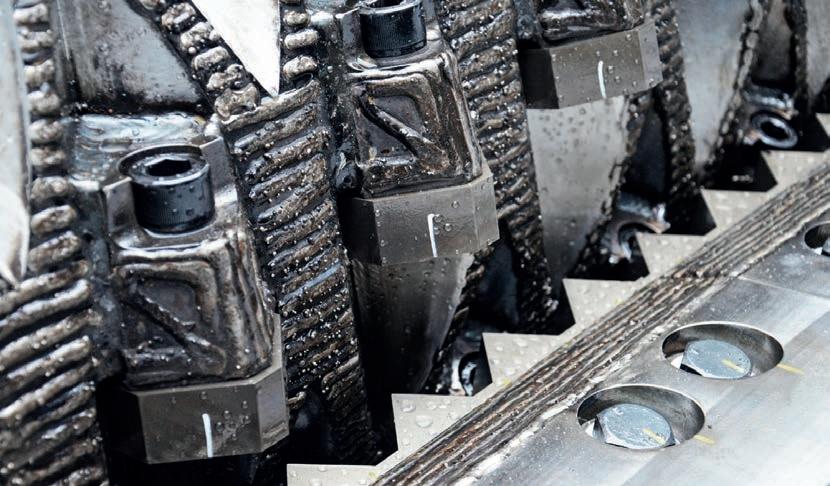
EQUIPPED FOR SUCCESS
With Australia’s ban on the export of plastic waste, Polymer Processors – with the support of the Federal Government’s Circular Economy – Recycling Modernisation Fund – has invested in new recycling machinery to further enhance its reprocessing capacity and divert waste from landfill.
John says that with more than 30 years’ experience in the industry, Polymer Processors has learned that buying equipment from cheaper, lesserknown brands is a “false economy”.
“CEMAC knows this, and they only supply high-quality European equipment,” he says. “And due to their quality and reliability, the premium for these trusted brands will be offset by savings in the long run, with less downtime and maintenance issues.”
This focus on reliability was key for the first stage of Polymer Processors’ latest expansion project
WASTE MANAGEMENT IN ACTION – SHREDDERS 52 / WMR / March 2023
Polymer Processors relies on the reliability of WEIMA Powerline shredders.
The Powerline’s angled counter knives are designed to be easily adjustable.
commissioned in September last year – which included SOREMA, EREMA, WESTERIA, and WEIMA technology.
A German-made WEIMA Powerline 2000 shredder was a crucial part of this set-up, and Polymer Processors will soon add a larger Powerline 2500 as part of the second stage of its expansion.
The new WEIMA shredder will be a key piece of a new purpose-built factory, which will also house a new WESTERIA conveyor system and an EREMA extruder – all supplied by CEMAC.
TECHNICALLY ADVANCED
The Powerline 2500 is a single-shaft shredder powered by a 250-kilowatt hydraulic drive train. It features an 800-millimetre rotor diameter, and is controllable via a Siemens S7 PLC control system for maximum ease of use.
With a high solid dead weight, the PowerLine Rotor requires less torque for shredding, and an external swing ram allows for a more aggressive material feed, as well as easier maintenance.
Angled counter knives are easily adjustable from the outside, and designed for quick and easy replacement when worn.
John says the WEIMA shredders’ hydraulic drive is a big part of their appeal.
“Hydraulic is more expensive, but much more powerful,” he says. “If overfilled, they automatically reverse without the maintenance issues caused from belts slipping. If blockages do occur, WEIMA shredders are set up to make unblocking them quick and easy.
“You can unblock the machine in 15 minutes – something that might otherwise have taken days. And if that shredder is hooked up to a whole line, that sort of downtime is very expensive.”
John expects the higher-capacity Powerline 2500 to help optimise operations even further, by essentially doing the work of two machines.
“We’re not pairing the 2500 with a granulator,” he says. “By using a larger shredder with smaller screens, it’s doing the work of both. This means less energy consumed, and less labour required as larger quantities of material can be thrown in, freeing up operators for other duties, like housekeeping.”
John says the Polymer Processors team has been impressed by CEMAC’s professional approach.

“They identify your needs and supply the right equipment,” he says. “Their hands-on assistance from start to finish has been commendable.”
For more information, visit: www.cemactech.com
–
25-26 October 2023 Melbourne Convention & Exhibition Centre Exhibit in 2023
Over 200 Council and government department attendees visited Waste Expo Australia.
Australia’s largest gathering of waste management and resource recovery professionals.
100% of exhibitors say they were extremely satisfied with Waste Expo Australia in 2022.
93% of exhibitors rated the quality of buyers as ‘good or excellent’ at Waste Expo Australia.
Organic partnerships
A PARTNERSHIP BETWEEN CEA’S ENVIRONMENTAL SOLUTIONS DIVISION AND AUSTRIAN PLANT AND EQUIPMENT MANUFACTURER THOENI IS LAYING THE GROUNDWORK FOR BETTER VALUE SOLUTIONS IN ORGANICS RECYCLING.
CEA has built a reputation as one of Australia’s leading equipment distributors. With brands such as JCB, Komptech, Dynapac, Ditch Witch and Atlas Copco in tow, the business reaches across industries –from construction to road building to material separation.
In 2020, CEA established the Environmental Solutions division to address what it considered a market gap in organics waste treatment – something a partnership with Austrian biogas plant manufacturer Thoeni Industriebetriebe GmbH is intended to address.

Like CEA, Thoeni is a family-owned business dating back to 1964. Its Thoeni Environmental Engineering division has been converting organic waste to bioenergy for more than 30 years.
CEA and Thoeni have recently signed on to design the technology component of a large organics processing facility in Western Sydney, that is intending to use anaerobic digestion to process commercial food (CO) and food and garden
organics (FOGO) waste, and capture the gas generated.
CEA Environmental Solutions Division Manager Sean Galdermans has taken the lead on this new direction for the business – one he says fits with CEA’s established network and reputation for customer service.
“CEA has moved beyond being solely an equipment distributor – we’re also a turnkey waste management solution provider,” he says.
“We’re no longer just who to speak to for a Komptech shredder or a JCB wheel loader. We can help from gate to gate, from the raw material coming in, to the product coming out. From trash-to-treasure.”
Sean has spent his career in the waste industry, with more than 10 years’ experience in markets across the world. He’s spent the past three years with CEA, lending expertise to the new division.
Mitchell Giles, working for the team as a Solution Specialist for Organic waste streams, says the Western Sydney project
will showcase the potential for harnessing organic processing for energy.
“I think most players in this space are usually more focused on the composting side – turning organics into compost, soil mixes and other nutrient-rich products,” he says. “Whereas we are integrating a prestep, or bolt-on, to the process where you can extract the biogas it generates – without diminishing the quality of the compost.”
Mitchell says this biogas is rich in methane, and can be converted into valuable resources such as electricity or biomethane.
“With Thoeni, we are trying to fill that void,” he says. “Anaerobic digestion reflects the natural evolution of the composting market as it matures and follows European trends .”
As composting facilities are becoming more controlled, efficient, and widespread, Mitchell says the next step is exploring how to make such capital-intensive projects provide more “bang-for-buck”.
“We’re harnessing a naturally occurring composting process that’s typically
WASTE MANAGEMENT IN ACTION – ORGANICS 54 / WMR / March 2023
A Thoeni Ekogas plant located in Forsbacka/Gävle, Sweden. Throughput is 25,000 tonnes per annum of kitchen waste, FOGO, grease, and green waste.
energy-negative and turning it into an energy-positive one. If you put that organic waste in landfill, it would still produce the methane,” he says. “Methane is 25-times more potent than carbon-dioxide, so capturing this biogas and turning it into something valuable is a no-brainer.
Sean says that now, it’s about making it stack up commercially.
“Federal, state, and local governments will have to play a role in legislation, but the trend of ever-increasing gas and electricity prices is certainly playing into the hands of anaerobic digestion as an energy-from-waste solution,” he says.

There is no shortage of examples of this technology already shaking up waste management sectors overseas.
“I’ve been part of projects overseas where the biogas captured on site was converted into electricity for usage on site, or cleaned and compressed as natural gas and fed to the city’s collection vehicles,” Sean says.
“They have garbage trucks powered by the gas produced by the waste, which are then bringing new waste to the facility. That’s a great example of true circular organics processing.
“With CEA and Thoeni’s partnership, we can take big commercial projects in Australia totally off grid, and still generate a surplus of energy that we can feed to neighbouring properties or back to the grid – so hopefully governments will recognise that opportunity.”
While Thoeni might not be a name widely known to the Australian waste industry, Sean says that is likely to change. “Thoeni has mostly been focused on Europe, where it has about 165 facilities up and running,” he says. “But it’s also started growing a presence in North America, as well as China, which is a big emerging market. It’s expanding very quickly.”
Sean says Thoeni’s growth is powered by partnerships with businesses like CEA around the world. He thinks these partnerships will also help develop local expertise to the benefit of the industry.
“It’s more than your typical reseller agreement,” he says. “Thoeni will train our local team to be self-sufficient, they’ll manufacture and supply key componentry, and provide supervision and assistance where needed.”
Sean says this will mean his team can provide local expertise backed up by CEA’s Australia-wide network for parts and support.
“In contrast to delivering a single machine, you’re delivering a system,” he says. “These plants can take quite a long time to start up because it’s a biological process. We’ll be able to have someone from CEA on-site to assist with that commissioning phase and provide training, as well as continued biological support to ensure the project will be a success.”
Given the investment required for these projects, Sean understands that establishing
trust is key. “We’re trying to take away as many hurdles as possible, and let customers know that they’re in safe hands, and that their investment will do what it’s supposed to do,” he says.
Sean says CEA’s customers can expect quality equipment combined with the guidance of a local team – one that can work with them through the design phase of a project, experiment with different feedstocks and inputs, and provide the right end-to-end solution.
“That really excites me,” Sean says. “It’s so much more than delivering a machine and handing over the keys and instruction manual. These are systems that are designed to be treating waste for the next 20 years, within an ever-changing waste industry landscape.”
CEA Environmental Solutions has additional partnerships in the pipeline, which Sean says will allow the team to diversify further into materials recovery, construction and demolition, and municipal solid waste facilities.

“We’re building a portfolio that will allow us to pick different partners – or a combination of them – as building blocks for different projects,” he says.
“Our aim is for CEA Environmental Solutions to be a one-stop-shop for anything related to solid waste. The Thoeni partnership is a crucial step in that direction.”
For more information, visit: www.cea.net.au
www.wastemanagementreview.com.au / WMR / 55
Thoeni‘s TTV Continuous High Solids Anaerobic Digestion (cHSAD) processes up to 90,000 tonnes per annum of FOGO with biomethane export to grid.
Sean Galdermans, CEA Environmental Solutions Division Manager.
Old industry, new tricks
ASTEC’S HIGH FREQUENCY SCREENING TECHNOLOGY IS PLAYING A ROLE IN NEW CALEDONIA’S CIRCULAR ECONOMY BY HELPING TO REFINE AND REPURPOSE LARGE VOLUMES OF NICKEL SLAG.
CIRCULAR SOLUTIONS
A granular sand-like material, nickel slag is a major by-product of the nickel refining process. Given New Caledonia’s more than 100-year history of nickel production – and the ongoing high production rate – SLN had been exploring ways to repurpose ever-growing stockpiles of slag in an environmentally conscious way. When SLN turned to Chris Salmon for help, he reached out to Astec – one of Australia’s leading equipment suppliers to the mining and infrastructure sectors.
“While earthmoving equipment hire has always been our bread and butter, I knew any avenue we explored for re-processing nickel slag would require specialty equipment,” Chris says, “and that’s why I contacted Astec.

Some 1200 kilometres east of Queensland’s Sunshine Coast, New Caledonia is perhaps best known as a tropical South Pacific holiday destination. But what has kept the French island territory’s economy ticking since the mid-1800s is the nickel mining sector.
Nickel isn’t what originally took Salmon NC Chief Executive Officer Chris Salmon to New Caledonia – but it’s a big part of what kept him and his business there.
“The Salmon family has been involved in the rental and hiring of heavy mobile
equipment in Australia for more than 70 years,” he says. “In 2004, we were engaged to hire out machinery for a large construction job in New Caledonia and from there, the business continued to grow. Today, Salmon NC has multiple customers across multiple sites.”
A recent project involves Chris and his team recycling nickel slag for SLN (Société Le Nickel), which operates one of the world’s largest nickel refineries in Doniambo, Noumea, on New Caledonia’s east coast. And that’s where Astec comes in.
“I was aware of Astec through my life in quarrying and through industry contacts. And I’d always heard them referred to as a highly reputable and reliable supplier.”
Chris says nickel slag has been widely used in New Caledonia for land reclamation.
“It contains no chemical nasties,” he says. “But SLN had the notion that it might have potential for other uses such as sand replacement in concrete, road base, fill and drainage material.”
The crucial piece of this circular economy puzzle was how to process raw stockpile to make it suitable for reuse.
WASTE MANAGEMENT IN ACTION – SCREENING UNITS 56 / WMR / March 2023
Salmon NC’s Astec GT2612V high-frequency screener.
PARTNERS IN PROCESSING
Astec’s Senior Account Manager, Materials Solutions – Northern Region, Shaun Quinn, travelled to New Caledonia to help scope the project.
“I went there a couple of times as Chris and I explored a range of options,” Shaun says. “And we established that Astec’s high-frequency screening technology would really suit this sort of application.”
The company purchased the Astec GT2612V and Chris says that, from the first engagement with Shaun and the Astec team, he felt very comfortable with the relationship.
“We were very confident the arrangement was going to work,” Chris says. “And we were impressed with Astec’s ability to provide the right after-sales support, too. Coming from an equipment hire background, we understand the importance of maintenance, parts support, and serviceability.
“And right from the start, Astec was fully across the complexities involved with shipping the unit from Australia to New Caledonia.”
The track-mounted high frequency screen was delivered and commissioned in November 2022 and has been processing large volumes of material since.
According to Shaun, the process involves feeding stockpiled raw nickel slag through the static grid to remove larger contaminants before it reaches the high-frequency screen, which then processes it into a usable material.
“A minus-50-millimetre material is sent to the high-frequency screen which separates anything bigger than four millimetres, and anything smaller is finished product in this application,” he says.
Shaun says the unit can be easily set up and adjusted to suit the specific needs of the project. “The high frequency screen used on this plant is a two-deck, six-foot

wide, twelve-foot-long screen. As both decks are twelve foot in length, you end up with four independently adjustable six by six-foot media panels,” he says.
“Each media panel has several vibrators directly underneath, allowing you to adjust the RPM independently via flow control valves. And we can also adjust their throw, and the screen angle to ensure the material travel rate is optimised.”
This versatility came in useful early on, when the Salmon NC team discovered the nickel slag material was more abrasive than anticipated.
“This briefly caused some operational issues for us,” Chris says. “But the Astec support team is fantastic. They helped us make tweaks and adjustments to settings and flow rates, and alter the way we were processing the material to best deal with its abrasive nature.
“Now we’re getting the best out of the machine itself, and the best operational efficiency.”
PROTECTING WHAT MATTERS
Gilles Rouvray, Salmon NC General Manager, says protecting the environment has always been a focus
for the business, but diversifying into recycling has been a new challenge.
“We’re excited to make this project work and find the best possible ways to use this nickel slag product, while trying to limit our carbon footprint,” he says.
Gilles says working on a small South Pacific island with a lagoon listed on the UNESCO World Heritage List puts into perspective the need to consider the environment in how one does business.
“The factory and mine is ISO 14001 and IRMA (Initiative for Responsible Mining Assurance) certified, which is a good start when you’re doing business in the environmental world,” he says. “You need to be respectful of our planet from the start to the end.”
Chris echoes this sentiment.
“Finding a secondary use for this industrial product and genuinely contributing to a circular economy there is really satisfying. And having Astec as a partner who is equally committed to being part of that process and giving back to the environment – it’s a fantastic result all round.”
For more information, visit: www.astecindustries.com
www.wastemanagementreview.com.au / WMR / 57
The GT2612V can be set up to suit the needs of a specific project.
The future of waste and recycling
WASTE EXPO AUSTRALIA IS A GATEWAY TO DECISION-MAKERS WITHIN THE WASTE, RECYCLING AND RESOURCE RECOVERY SECTORS. IN THE LEAD-UP TO THE 2023 EVENT, VICTORIAN WASTE MANAGEMENT ASSOCIATION EXECUTIVE OFFICER BRETT LEMIN OUTLINES WHY COLLABORATION IS MORE IMPORTANT THAN EVER.

The Victorian Circular Economy (Waste Reduction and Recycling) Act passed at the end of 2022 will help the industry realise new opportunities, according to Brett Lemin, Executive Officer of the Victorian Waste Management Association.
With a regulatory roadmap in place, he says businesses will have the confidence to invest and develop the technology that will thrust the state into being a global leader.
And while there are still some grey areas to be ironed out, it’s an exciting time to be in the waste and resource recovery sector.
“Industry and society have been moving this way for a long time but haven’t had the regulatory framework and stability to create a circular economy and these types of investments,” Brett says.
“The act aligns with everyone’s expectations and realisations about what we can and should be doing. It’s really accelerating growth in this sector.”
Brett says there’s currently a focus on recyclables and renewable energy, which encompasses clean energies. Already he’s seen the flow-on effects of industry having clear opportunities and pathways.
“There’s been plenty of ideas floating around for a while, now people have the chance to put them out there. There’s an increase in investment that is going to
accelerate the rate that new technologies are developed.”
He sees collaboration as one of the quickest ways to accelerate growth and the circular economy.
It’s about creating the opportunity and awareness that will bring more people to the market including investors and problem solvers.
Waste Expo Australia has long been a springboard for that collaboration and Brett says that was never more evident than at the 2022 expo.
He’s aware of several meetings and conversations that have taken place as an offshoot of the expo.
“There was a lot of networking and collaboration between companies and
EVENTS 58 / WMR / March 2023
Waste Expo 2022 sessions were well attended.
people that never would have crossed paths,” Brett says.
“There are university students and council staff who through normal channels wouldn’t be exposed to that level of technology.
“It’s a chance for them to see what’s happening in Australia and overseas and see what would work for their company or municipality. One of the greatest things
the expo does is bring everyone together and allow those conversations to happen.”
VWMA will host a breakfast at the 2023 expo, providing another avenue to bring the industry together to discuss current issues.
Repurpose It has been involved with several Waste Expos as both an exhibitor and speaker.

Erin Ford, Repurpose It Business Development and Partnership Manager, says the 2022 expo allowed the company to connect with like-mined people and organisations and show them what they could do to support a circular economy.
“As leaders in the resource recovery industry, it’s important that we’re involved in these events that allow us to showcase our products and services,” Erin says.
“At Repurpose It, we think we all have a role to play in advancing Australia towards a circular economy. Waste Expo 2022 allowed us to talk to the community and people in the waste/recycling industry about making a difference to the way they dispose of their waste and purchase materials.
“There were a lot of meaningful conversations. We had a constant stream of people to talk to.”
Erin says one of the takeaways from last year’s expo is that people want to make a difference in the waste management and resource recovery sector.
Jake Henderson, National Sales Manager for HSR Southern Cross, agrees the expo is a good platform to reach key decision-makers.
“The audience is targeted. The people are all involved in the waste industry and are looking for ways to improve,” he says.
HSR Southern Cross has exhibited at Waste Expo since 2018. In 2022, the company had two new product releases on show – an Australian-made angled leg skip loader and Australian-made rear compaction low entry garbage truck the later of which is ideal, Jake says, for doing waste collection in low access car parks in apartment units etc.
“We had a lot of interest,” he says. “We’ve made quite a few sales as a result of the expo. It has been pleasing, seeing Australian-made manufacturing be so popular.”
Caroline Nguyen, Tomra Marketing Executive, believes one of the keys to success at the expo is being able to demonstrate the technology on show and engage with the audience.
A leading provider of reverse vending machines for container deposit schemes, Tomra is a long-time advocate of the expo both as an exhibitor and participant in industry sessions.
In 2022, Tomra’s charity partnership manager and business development manager both attended the expo to share the successes of the New South Wales container deposit scheme and how that could be replicated within Victoria.

Caroline says allowing people to see the technology in use and try it themselves is important.
Waste Expo 2023 will be held on 25 and 26 October, at Melbourne Convention and Exhibition Centre The expo is co-located with All-Energy Australia and will be held in partnership with the Waste Innovation and Recycling Awards.
For more information, visit: www.wasteexpoaustralia.com.au

www.wastemanagementreview.com.au / WMR / 59
Waste Expo is a key platform to bring industry decision-makers together.
DO YOU KNOW A DRIVER OF CHANGE?

WOMEN IN INDUSTRY NOMINATIONS ARE NOW OPEN. Now is your chance to nominate an industry leader who you believe is advocating for positive change and deserves to be recognised.

WOMENININDUSTRY.COM.AU








THURS 8 JUNE 2023
The Women in Industry Awards recognise outstanding women leaders from across Australia’s industrials sector.
MHD Supply Chain Solutions PROUDLY
PRESENTED BY
SPONSORED BY Australia
In the zone
AN EXPANDED PROGRAM AT THE 2023 AUSTRALASIAN WASTE AND RECYCLING EXPO WILL GIVE INDUSTRY A PLATFORM TO ADDRESS CURRENT CHALLENGES.
COVID-19 pandemic. However, the level of attendance, feedback and excitement was powerful.
“There was an element of community,” she says. “Everyone in this industry wants a sustainable resource recovery system. They want Australia to be on the same page, so there is a strong presence of sharing and collaborating and wanting to work together.
“I’m really excited this year to continue that feeling and help it grow.”
SHOWCASING SOLUTIONS
The exhibition floor at this year’s two-day expo will include some old favourites and new inclusions.
Australia has regressed in its bid to reduce total waste generated by every person by 10 per cent by 2030, according to the 2022 National Waste Report released in December.
The report stated that Australians generated almost three per cent more waste compared to 2018-19, while the country’s recycling rate remained stagnant at 60 per cent.
Sofie Teh, Australasian Waste and Recycling Expo (AWRE) Event Manager, says it’s time to get down to the nitty-gritty of what action is needed and how it’s implemented. She says an expanded program at the 2023 AWRE, taking place at the ICC in Sydney from

26-27 July, will deep dive into some of the issues affecting the sector.
“Waste and resource recovery is a nationwide issue. While each community has its own challenges, reaching national waste targets is a goal for everyone,” Sofie says.
“We need to be recognising what the industry needs, whether that’s more government involvement or industry support.
“We want to make sure we’re allowing a platform for that conversation to take place.”

Sofie says there was a level of uncertainty before AWRE 2022, the first fast-to-face expo since the
The Innovation Zone, launched in 2022 to give waste and recycling businesses the chance to pitch their products or services to an audience, was well received and will expand in 2023. As will the AORA (Australian Organics Recycling Association) Organics Zone.
“There’s a big focus on food waste in the national waste targets and we really want to make sure that has a presence and we support that sector,” Sofie says.
The 2023 program will include the launch of the Recycled Zone, to showcase businesses in the industry that provide products made from recycled materials or recycling solutions.
“There’s so much talk about what the process is in terms of recovery of materials, but it’s important to highlight what happens to those materials,” Sofie says. “The audience is keen to see the end result. What are the products that come out of this and how can we use it
EVENTS www.wastemanagementreview.com.au / WMR / 61
Professor Veena Sahajwalla speaks at the 2022 Expo.
day-to-day in our roads or communities for example.
“We want to make sure we’re giving that platform to companies because there is so much happening out there.
“Some of these products that are made from recycled products will eventually transition to a closed loop. We need to keep talking about and normalising these solutions because it will be important in the waste and resource recovery space.”
DRIVING ACTION
The inaugural Resource Recovery Summit in 2022 provided highlevel collaboration between industry, government and waste generators; and timely discussions on the latest challenges, developments, strategies and policies facing Australasia’s waste and recycling industry.


In 2023 the summit will be expanded to a full day in response to audience demand.
“There were a lot of audience questions directed at the speakers last year,” Sofie says. “It shows the industry is so engaged, there’s a lot of action but also inaction. The industry needs more support.
“We need these forums to raise issues. What are the roadblocks? What needs to happen to progress? We want to allow for a full day for these discussions to take place.
“There are so many different sectors within the industry having the same issues and challenges. Being able to voice opinions and network with others is very important.
“We want to create that space where there’s high level involvement which we hope to see action from.”
The expo’s seminar series will continue with two theatres on the exhibition floor. The theatres will host topical sessions around what’s happening in packaging, organics, construction and demolition waste, and industrial and commercial recycling.

Curated by a range of expo partners including AORA and the Australian Packaging Covenant Organisation (APCO), the sessions will focus on understanding current issues and solutions in the industry.
It was a full house for all sessions in 2022 and Sofie is expecting similar interest this year.
“People in the industry are really inquisitive and keen to find solutions –those sessions are a good starting point for them to connect with experts,” she says.
DOING THEIR PART
One area of focus for AWRE 2022 was a reduction of the waste generated by the exhibition itself. AWRE brought back its “Strive for Five” campaign –which set a target of just five per cent of the event’s waste sent to landfill.
AWRE provided contactless water refill stations around the exhibition floor, which supplied 282 litres of
62 / WMR / March 2023 EVENTS
The exhibition floor at AWRE is always popular.
The Resource Recovery Summit will be expanded in response to audence demand.
water during the two days – the equivalent of 470 600-millilitre plastic bottles.
Exhibitors were encouraged to only provide collateral that was reusable, and to avoid single-use items. Dedicated solutions were provided for each of the different waste streams, and even name badges were collected for reuse or recycling at the conclusion of the show.


“Minimal waste is a top priority for us,” Sofie says.
“It’s an important part of our vision for this event and important that we’re living that.
“Sometimes it’s just about reminding the audience to bring in a water bottle to use at a refill station or to bring a reusable coffee cup for the day. It’s getting people used to doing those little behavioural things.
“I’m keen to see what other solutions we can implement this year.”
Sofie says she’s excited for the expo to return and continue to inform the industry.
Bookings are available for the exhibition floor and Recycled Zone.
For more information, visit: www.awre.com.au
KIVERCO PS122 PICKING STATION
• 4 bay sorting - Recovers clean stone, wood, paper, plastics, card or other recyclable materials at the option of the operator

• Combines air separation, magnetic separation, and manual sorting in one compact unit
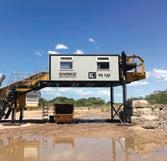

• Adjustable belt speed - 1200 mm wide picking belt adjustable to suit waste material and desired recovery required
• The hydraulic jack leg support offers rapid set-up and transport
SALES | HIRE | SERVICE | PARTS 1800 182 888 | www.lincom.com.au | sales@lincom.com.au | OFFICE LOCATIONS | QLD | N QLD | HUNTER REGION | NSW | VIC | WA REDUCE DOWNTIME. INCREASE PRODUCTIVITY. Recycling Made Easy.
The expo is a starting point for people to connect with experts.
Working together for a better future
BUILDING CONNECTIONS IS A BIG PART OF THE COFFS HARBOUR WASTE CONFERENCE. ORGANISERS OF WASTE 2023 AIM TO DRAW ON SHARED EXPERIENCES TO LOOK FORWARD TO THE YEAR AHEAD.
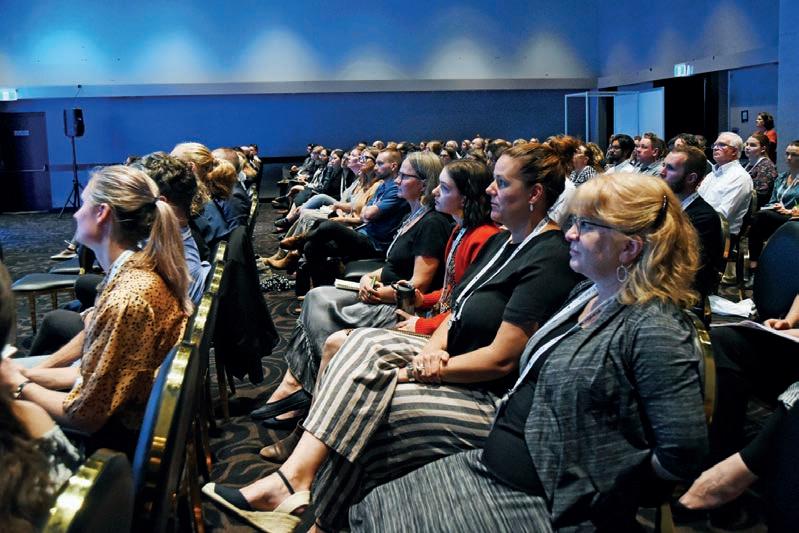
Understanding the role and importance of social change, rather than relying solely on engineering solutions, has always been a focus of the Coffs Harbour Waste Conference.
For Greg Freeman, Conference Convenor, it’s about providing an opportunity for people to learn, connect and be inspired. It’s what drove him to start the conference in 1996 and continues to drive him today.
“The idea that it’s about people at the centre of the discussion has always been really important,” Greg says.
“Where we are different as a conference is that the content is crafted by people in the industry, not by us. The focus each year has been to try and reflect where we are in the industry.”
He says the theme for Waste 2023 – Working together for a better future – is important for the industry as it continues to shake off the effects of the COVID-19 global pandemic and subsequent lockdowns.
The priority, Greg says, is to get people back together and look forward.
The response to a call for abstracts is a good indication that things are returning to normal and the conference, as well as the program, will be bigger and better than ever. More than 150 submissions for abstracts were received, surpassing that of any other year.
Greg says the type of abstracts reflect an industry that has always been on the front foot – what started as waste management is now resource recovery and at the cutting edge of society.
“There’s a demographic, age and content shift,” he says. “There’s a younger generation coming through, with different ideas.
“When the conference started in ’96 it was basically landfill compactors, garbage bins, weigh bridges and basic infrastructure.
“Now it’s more software and communications services. The focus has shifted away from regulation
driving content to more innovation and technology.”
It was with that shift in technology in mind that the 2022 conference introduced an equipment and technology expo component. Based on its success, the expo will return in 2023.
The expo, which includes a selection of presentations complementing the existing outdoor exhibition, will take place on 9 May and provide delegates an opportunity to see equipment in action and hear from suppliers about the latest and greatest in waste management.
EVENTS 64 / WMR / March 2023
The Coffs Harbour Conference has always been a reflection of current industry.
Greg says the expo is a way to give companies a voice and an opportunity to sell their products and ideas.
“We want it to enhance the conference. It’s one of the things that we will build on over the next few years and see how it goes,” he says.
Harnessing a wish to give the industry an opportunity to share ideas and recognise growth, the conference will include the 2023 Excellence in Innovation Awards, sponsored by the Battery Stewardship Council.


It will be the first time in 10 years the awards have been presented and will include awards for outstanding council project; innovative product or technology; and revolutionary new start-up.
Greg says they aim to acknowledge those key people in councils and the non-government sector who work tirelessly behind the scenes to improve sustainability in the community.
“We are very mindful that the waste and resource recovery sector has been hit hard over recent years. The pandemic and other global shocks
have emphasised the importance of our industry to society and that this industry is essential, evolving, and innovative,” he says.
“Despite the barriers faced, many councils and businesses have continued to provide innovative
solutions as well as new products and technologies designed to benefit the community as a whole.”
The Coffs Harbour Waste Conference is targeted at anyone who works in, or has an interest in waste management issues, particularly local government.
Attracting more than 600 delegates from across the nation, the 2023 hybrid event, will be held at Opal Cove Resort, Coffs Harbour, from 9-11 May, and features both face-to-face and online attendance options.
Attendance at the equipment and technology expo can be oneday only or form part of the full conference experience.
Exhibitors interested in providing a presentation as part of the expo can contact organisers.
Sponsorship and exhibition opportunities are selling fast.
For more information, visit: www.coffswasteconference.com.au or phone (02) 6583 8118
www.wastemanagementreview.com.au / WMR / 65
Adelaide Zoo Keepers, aka LMS Energy, at last year’s conference dinner.
The Advanced Recycling Panel session at Waste 2022 was well received.
Melbourne’s leading construction and major infrastructure event

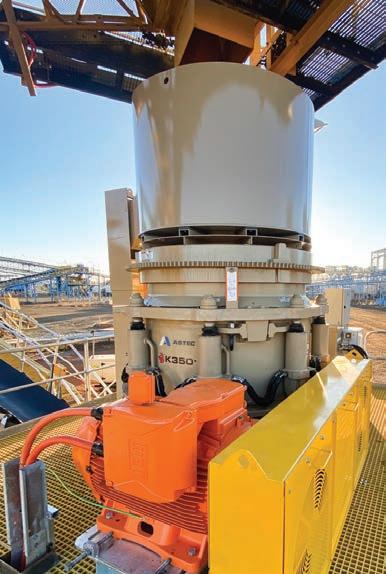
Inside Construction Expo will deliver

Targeted messaging in over 19 industry-leading publications that reach more than 80,000 decision makers across multiple sectors
Digital communications to 28,000+ engaged readers
Premium networking opportunity with industry leaders at the Foundation Awards gala dinner
insideconstructionexpo.com.au
EXHIBITION SPACE NOW ON SALE
Melbourne
Convention and Exhibition Centre 20-21
Sept 2023
The Volvo ECR35D compact excavator is designed for mobility and precision in tight spaces. Featuring a stateof-the-art hydraulic system, the ECR35D delivers high performance, smooth operation, and excellent stability.
The ECR35D has a short front and rear radius and intrack boom swing to ensure safe and easy operation in confined spaces. The swing post and cylinder stay within the tracks when in an offset position, avoiding the risk of damage to the machine and its surroundings when working alongside obstacles. Slew and offset movements are also controlled simultaneously for simple, fast positioning of the machine.
Volvo’s cab design focuses on operator comfort and functionality for improved productivity. The ECR35D’s spacious cab boasts all-round visibility, exceptional vibration and noise insulation, and intuitive, ergonomic fingertip controls. The machine’s functions and hydraulic settings are accessible using the on-board keypad and monitor for enhanced ease of operation, reduced fatigue, and improved fluency.
Several of the ECR35D’s features combine for increased productivity, reduced operation costs, and maximum uptime: ECO mode allows you to choose the right machine setting to optimise fuel efficiency for the job at hand, and the robust design and quality digging equipment delivers durability for long-term machine value.


Volvo also provides a range of durable and purpose-built attachments to make your excavator versatile.
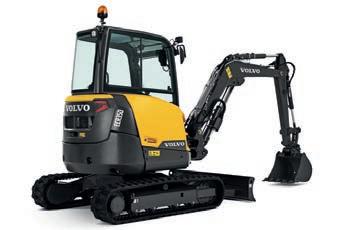
BUILT TO CONNECT
With unmatched strength from rock to road, connection is at the heart of everything we do. At Astec, we design and manufacture products used to build the infrastructure that physically connects the world. But it’s the connections we make with people that drive us forward.


Our company was founded on innovation and we are committed to helping our customers succeed. Astec - we’re built to connect.

Contact – CJD Equipment P 1300 139 804 W www.cjd.com.au E enquiries@cjd.com.au PRODUCT SPOTLIGHT
VOLVO ECR35D COMPACT EXCAVATOR
278 322 enquires.australia@astecindustries.com astecindustries.com
1300
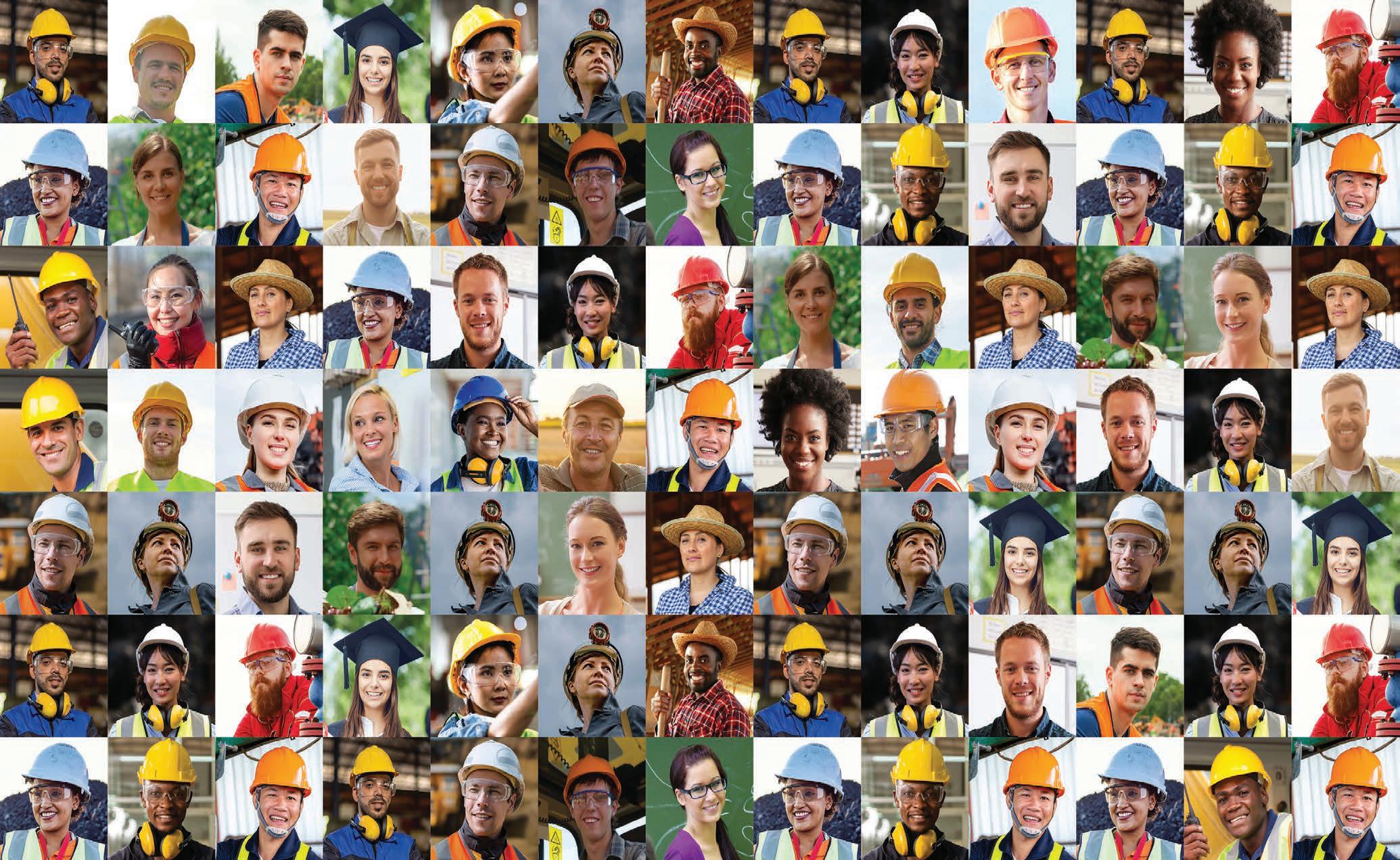
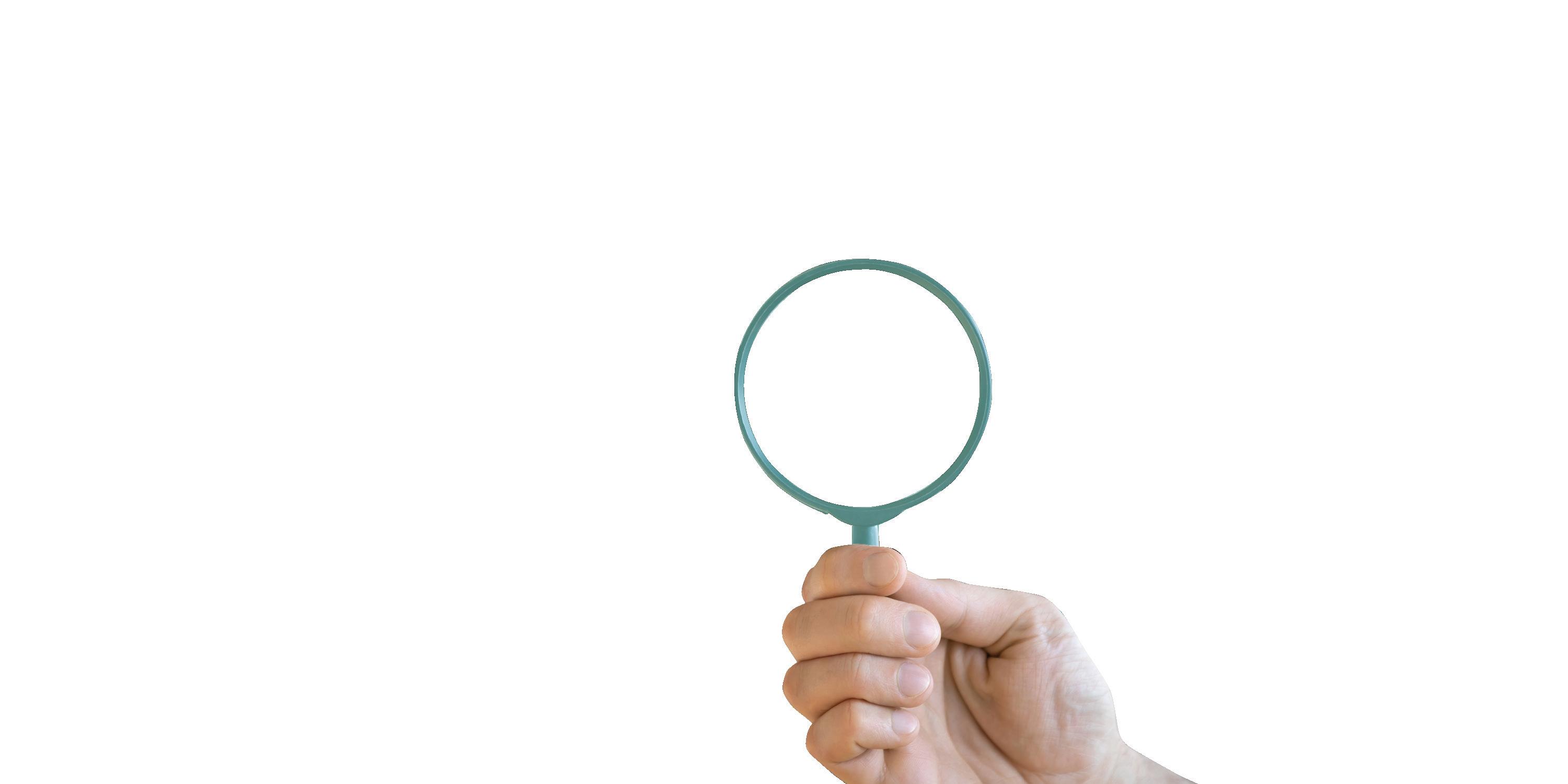
Connecting talent with industry. powered by careerone hiring.wastemanagementreview.com.au ADVERTISE JOBS TODAY
Measuring the circular economy


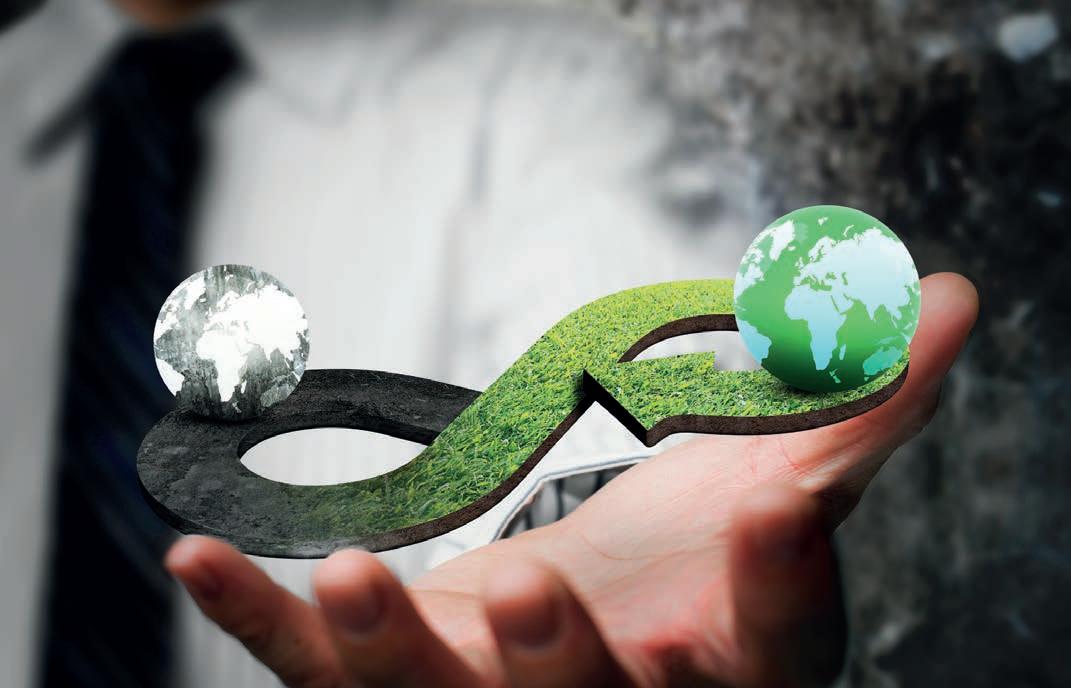
DR GEORGINA DAVIS, CHIEF EXECUTIVE OFFICER OF THE WASTE RECYCLING INDUSTRY ASSOCIATION QUEENSLAND, SAYS AUSTRALIA CAN’T AFFORD TO WAIT FOR A PERFECT CIRCULAR ECONOMY POLICY.
environmental pollution, carbon, and Although most jurisdictions have not even commenced talking about resource efficiency targets, a notable exception is the Netherlands that has committed to halve primary resource use by 2030 as part of its circular economy transition
January 2023, saw a proliferation of circular economy-related reports, starting
with the release of the UK’s Independent Review of Net Zero (Mission Zero) by the Rt Hon Skidmore. The Mission Zero report clearly aligns the net zero agenda with circular economy outcomes, with one of the report’s 25 recommendations being; ‘to launch a taskforce to work jointly with industry to identify barriers and enablers and develop sector-specific circular economy business models for priority sectors’.
THE LAST WORD www.wastemanagementreview.com.au / WMR / 69
Inconsistent policies and a lack of coherence across government is eroding confidence in the sectors that will drive real change toward a circular economy.
The report also noted the damage that inconsistent policies and a lack of coherence across government was having with regards to implementation of resource productivity, with little effective cross departmental governance eroding confidence to the sectors that will drive real change and develop green skills. Sound familiar?

The Circularity Gap Report 2023 then noted the global economy to be only 7.2 per cent circular today, reducing from 9.1 per cent in 2018; so of the 100 billion tonnes of virgin materials extracted annually, only 7.2 per cent makes it back into the economy in the form of recycled materials.
The report identified four key global systems accounting for the majority of emissions and waste – the built environment; food systems; mobility and transport; and manufactured goods and consumables. It then outlined 16 circular economy solutions across these systems to reverse the current overshoot, thus reducing impacts and limiting global warming to below two degrees.
There are obstacles to progress the change needed, not least there is still no clarity or a single definition or understanding of the circular economy or ‘circularity’, a point that has now been raised in more than 100 published critiques.
There is no doubt that the term is uncritical, extremely descriptive and highly normative and that the concept is far from new. Indeed, does it diminish the more highly defined and practiced policy and process theories?
Another issue is its measurement. If we are still not getting the current metrics for recycling right, how do we determine suitable metrics for the circular economy? How do we set a metric that drives resource productivity which we can measure and report, and what are appropriate targets?
Personally, I am in favour of legallybinding targets as someone needs to be
responsible. Motherhood statements, feel-good targets and voluntary schemes just lead to abject failure and have no role beyond pilots and trials. However, if targets are mandatory, they need to be measurable.
Resource efficiency and productivity are a measure for circularity but how would an economy, such as Australia, impose resource efficiency and material consumption targets when we are so highly reliant on export income, and we import 60-70 per cent of our consumer items?
Some jurisdictions have set resource productivity targets against gross domestic product (GDP) and there is debate if this is a good or bad thing. GDP at least is measurable and is a familiar metric used by markets and governments, thus potentially allowing for a granular measure. But will it necessarily lead to the desired outcome?
To move away from the issues of GDP other jurisdictions, such as Wales (UK), have set ‘one planet’ resource use targets but how do we measure this? There is always difficulty with introducing new metrics.
Is residual waste a useful measure of a circular economy? If you are a local government, maybe. Then how do we measure co-benefits of the circular economy such as social value or green skills development?
Metrics need to be simple and focused. While more tangible targets such as landfill diversion may have been fit for the past century it is insufficient for the circular economy. And total waste may indicate consumption trends while residual waste only shows what resources we are wasting and consumption.
Given the findings in the Mission Zero report (and others), where are the Resource Use Plans for specific sectors that contain binding targets? These would require baseline data as well as suitable metrics for ongoing measurement and reporting. It would
also be useful for sector or regional plans to have metrics including total waste produced per unit of production (which could be a proxy measure for resource efficiency) and if we could add bin weights for commercial and industrial, we can start to measure other useful trends.
So how does our sector interact and how did we assume so much of the responsibility for delivery, (for recycling through to the circular economy) when we know 80 per cent of impacts happen at the design, manufacture to retail stages?
It is so much easier to address resource productivity and circularity through virgin materials extraction, product design, import standards, retail models etc.
How do we accelerate data development (including methodologies) and reporting (including metrics) given commitments to carbon reduction and biodiversity? We cannot meet 2030-50 targets without redressing our resource use and resource patterns.
My message is that we cannot wait for circular economy policy to be perfect, we need progress urgently.
70 / WMR / March 2023 THE LAST WORD
Dr Georgina Davis, CEO, WRIQ
DON'T LET YOUR WASTE GAS GO TO WASTE.
REVOLUTIONISE YOUR WASTE GAS MANAGEMENT WITH OUR STATE OF THE ART WASTE GAS TO ENERGY SYSTEMS.

Our cutting-edge waste gas to energy solutions have consistently delivered outstanding results for our clients throughout the Asia Pacific region. Guided end-to-end by our in-house team, unlock access to a cost-effective, customised investment for your waste gas management and turn your waste gas into a valuable resource.
From a complete, turn-key plant built in our Australian manufacturing hub, to ongoing operation and maintenance from our specialist team, we have the proven track record to deliver your next waste management asset. Don't miss the opportunity to revolutionise your waste gas management. Contact our waste gas to energy specialists about your site today.

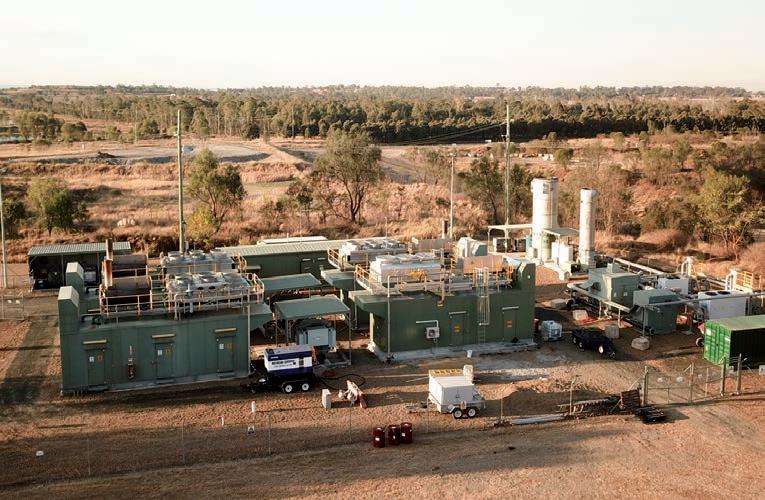
t 1800 636 744 | eneraque.com
•
•
•
DESIGN
BUILD
INSTALL OPERATE
MAINTAIN
Turn Key Waste Gas to Energy System. Mega Dairy Farm, NSW.
Turn Key Power Generation Plant. Landfill Site, QLD
Gas Flaring. Landfill Sites, QLD.
TOMORROW’S SOLUTIONS. TODAY
Since 1992, we have repurposed over 60 million tonnes of waste. We are in the business of resource recovery –transforming waste into usable products. Find out what we can do for you.
• Construction and Demolition Waste
• Commercial and Industrial Waste
• Tyre Recycling
• Energy from Waste

• Complete Material Solutions
• Circular Economy Carbon Abatement
resourceco.com.au

















































































































































































































 Blue Phoenix Australia
Blue Phoenix Australia






 Shred-X has partnered with Australian recyclers to divert e-waste from landfill.
The JCB range of wheel loaders are built to be strong, reliable and provide comfort for long days in the cab. Designed for ultimate productivity, and offering superb performance the JCB wheel loader range features best-in-class comfort, visibility, safety ergonomics and superior serviceability plus a whole lot more.
Shred-X has partnered with Australian recyclers to divert e-waste from landfill.
The JCB range of wheel loaders are built to be strong, reliable and provide comfort for long days in the cab. Designed for ultimate productivity, and offering superb performance the JCB wheel loader range features best-in-class comfort, visibility, safety ergonomics and superior serviceability plus a whole lot more.





































 says that the contract award
says that the contract award










































